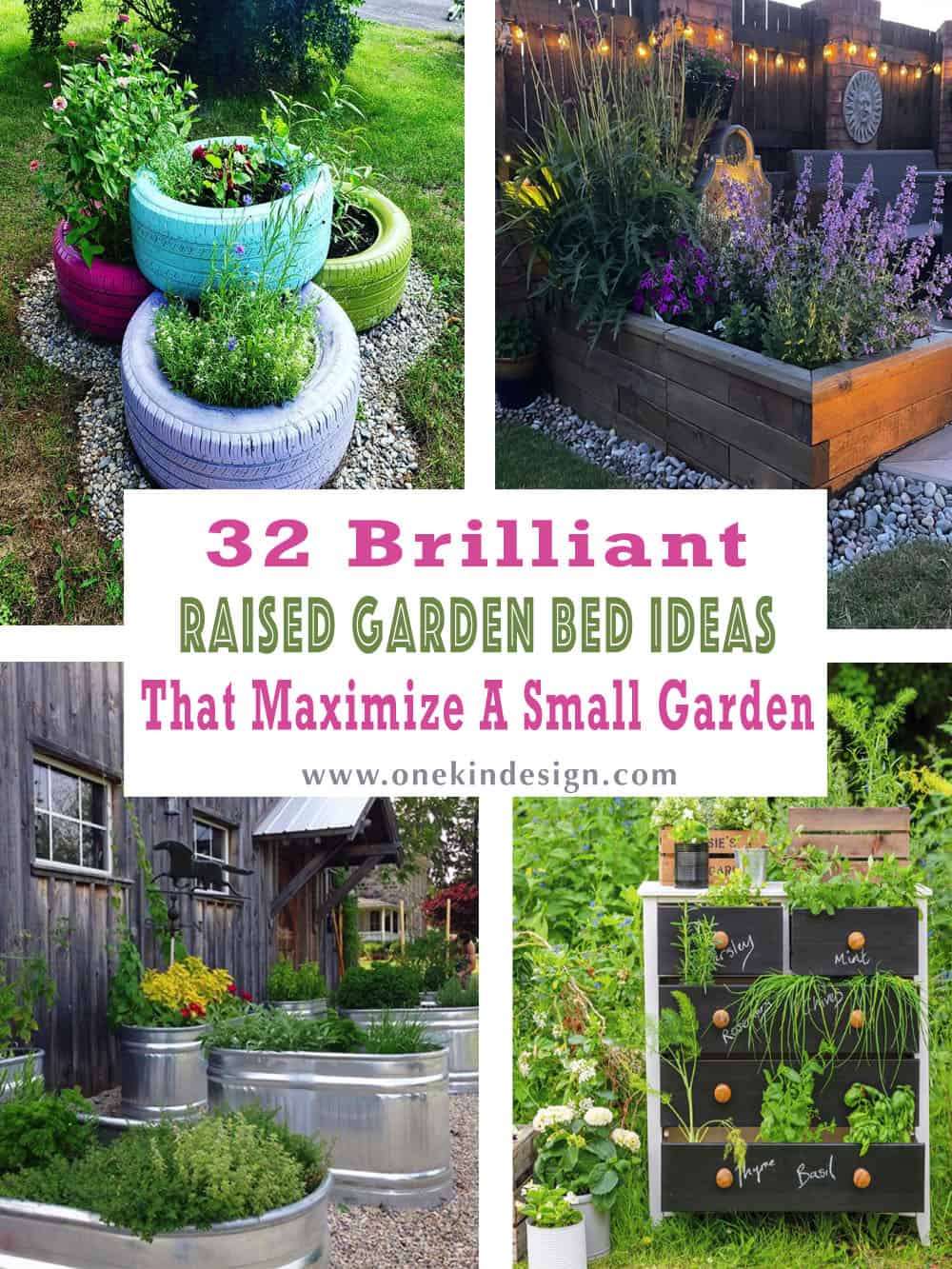
Raised beds are ideal for small yards. They can be as simple or complex as you like while also enhancing the overall aesthetics to create an outdoor oasis. Adding a raised bed to your property has many benefits, including improved soil drainage, accessibility to your plants from every angle, reduced back strain as there will be no bending over required, ease of movement, increased soil control, and the ability to better control weeds and pesky bugs.
You can easily DIY your raised bed by upcycling the materials you already have; this includes wood palettes, wood planks, or even bricks. You can also purchase a pre-built kit that requires a power screwdriver to put it together. You can also use a grow bag in your garden that can be moved anywhere, adding color and aroma to your outdoor spaces.
Traditional raised bed materials include mulch, straw, and stones. When selecting your foundation, you will have to consider whether the garden bed will be permanent or temporary. After construction, your raised garden bed will have similar maintenance costs as a traditional garden.
Tell Us: Which of these raised bed ideas do you love most? Let us know in the Comments below!
What Are The Benefits Of A Raised Garden?
The benefits of having a raised garden include fewer weeds, good soil drainage (similar to that of a container where potting soil is not compact), and they look beautiful in your garden. Because raised beds are above ground, their soil will gain warmth faster during spring, and you can begin planting much sooner. The material you select for constructing your raised garden bed will make a huge difference, as metal retains more heat from the sun.
How Much Soil Do You Need For Your Raised Garden Bed?
After you have installed your raised beds and are ready to fill them with soil, you may wonder how much soil you will need. Luckily, there is a formula to calculate soil volume to help you figure out exactly how much you will require based on the size and shape of your bed. If you have a square or rectangle bed, this simple formula will help guide you. According to @eartheasy, who makes USA-made cedar raised beds and planters, below are the steps you will need to take.
- Step 1: Measure your bed’s length, width, and height. (Don’t worry about inside/outside measurements unless the boards are very thick.) Convert all measurements to the same unit. For example, if your bed is 6 feet long, 3 feet wide, and 16.5 inches high, convert the inches to feet so your new measurements are 6 x 3 x 1.4 feet.
- Step 2: Multiply all the measurements together to find the volume: 6 x 3 x 1.4 = 25.2 cubic feet.
- Step 3: Divide the answer by 27 to get the number of cubic yards. In the example above, your bed would need 0.9 cubic yards of soil.
Once you have calculated this number, you can start filling your raised garden bed!
1. Cedar Raised Beds.
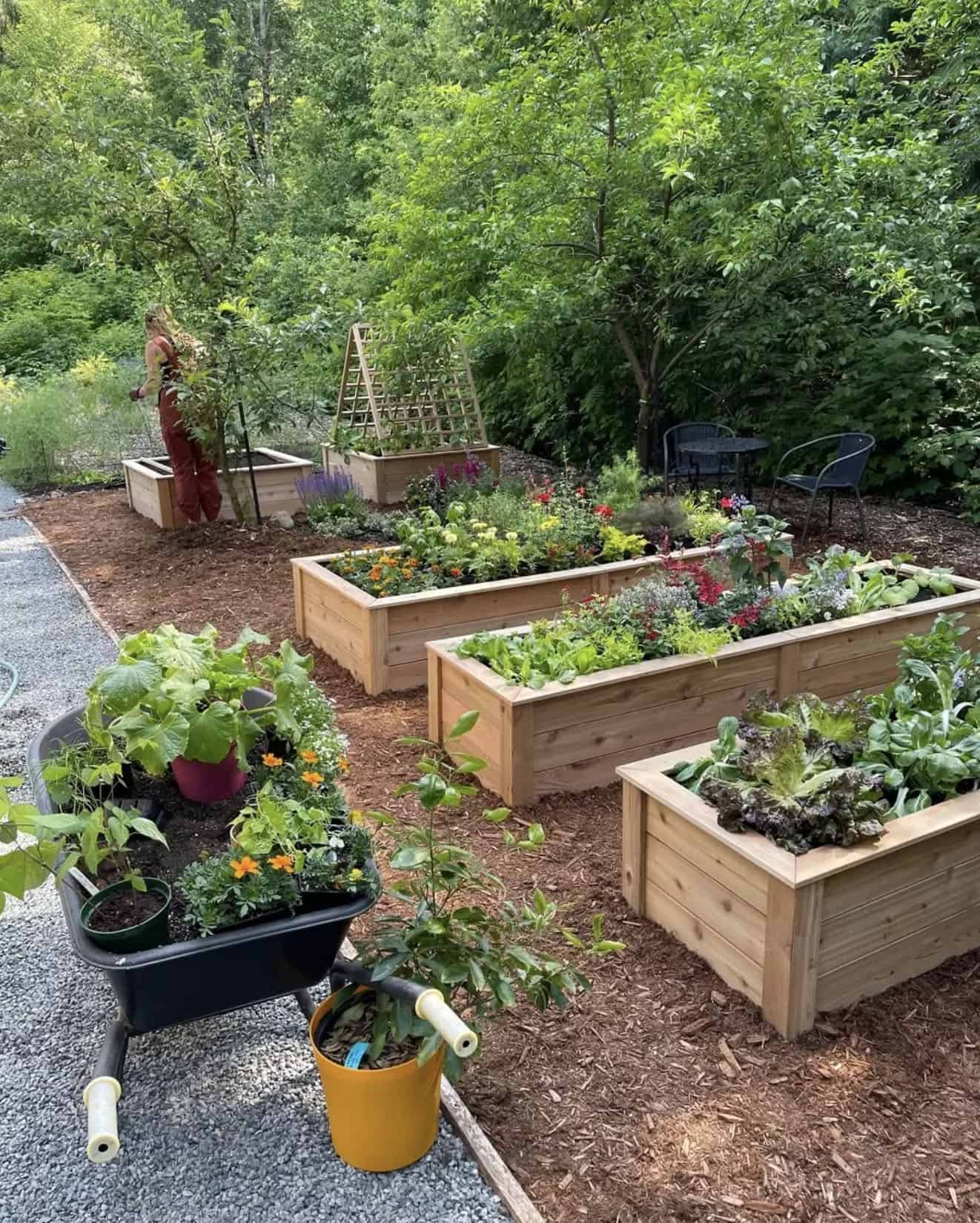
You will not need any special DIY skills to make these beautiful raised planters. These natural cedar raised beds come pre-cut and ready to assemble in minutes with just a power screwdriver. Get the details at the provided link. (via @eartheasy / Instagram)
2. Edible Raised Garden.
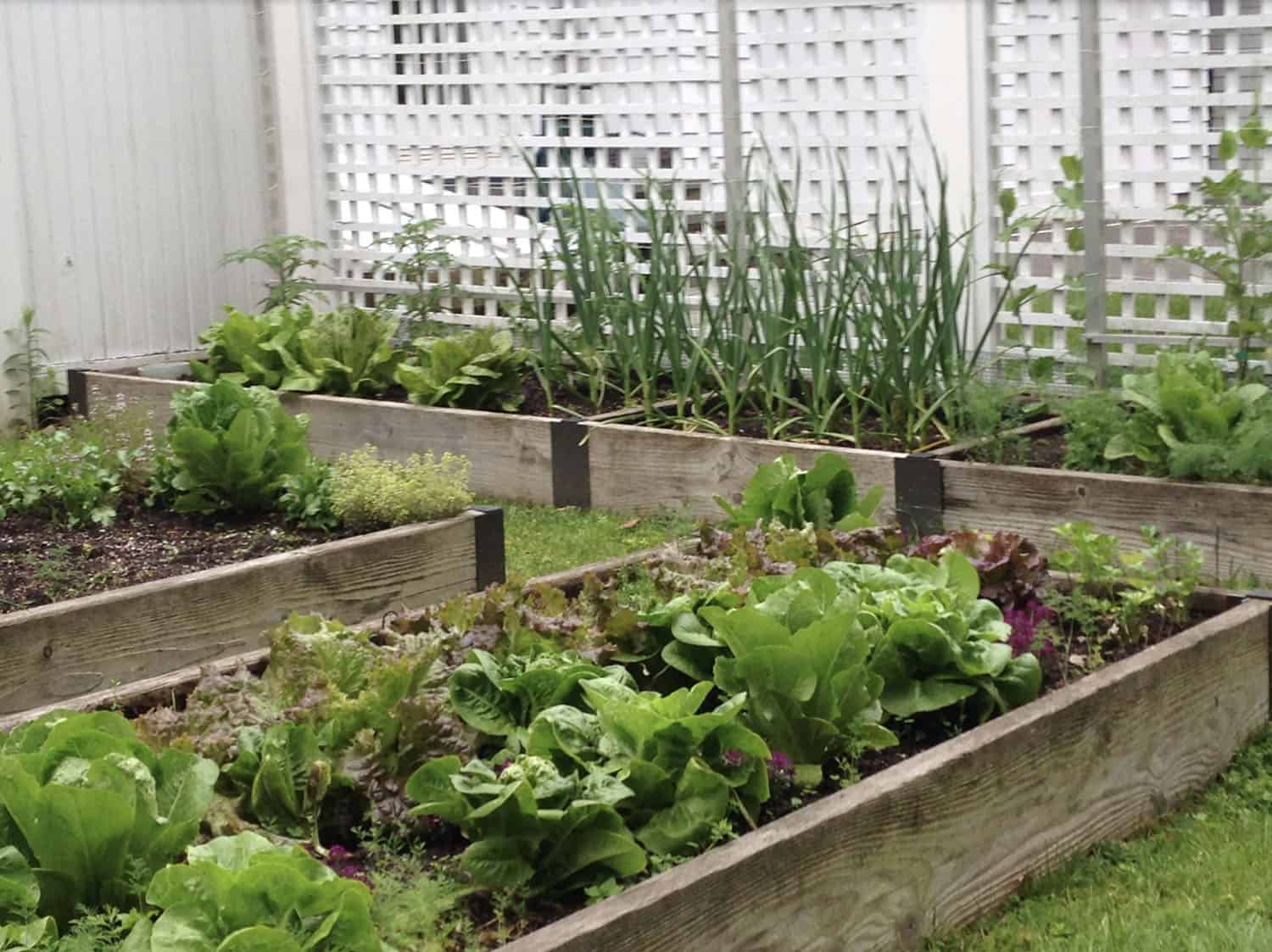
Herbs, lettuces, and young tomato plants can be found in this raised bed vegetable garden in the side yard, which features aluminum trellises for privacy. (via Bespoke Gardening)
3. Herb Spiral Garden.
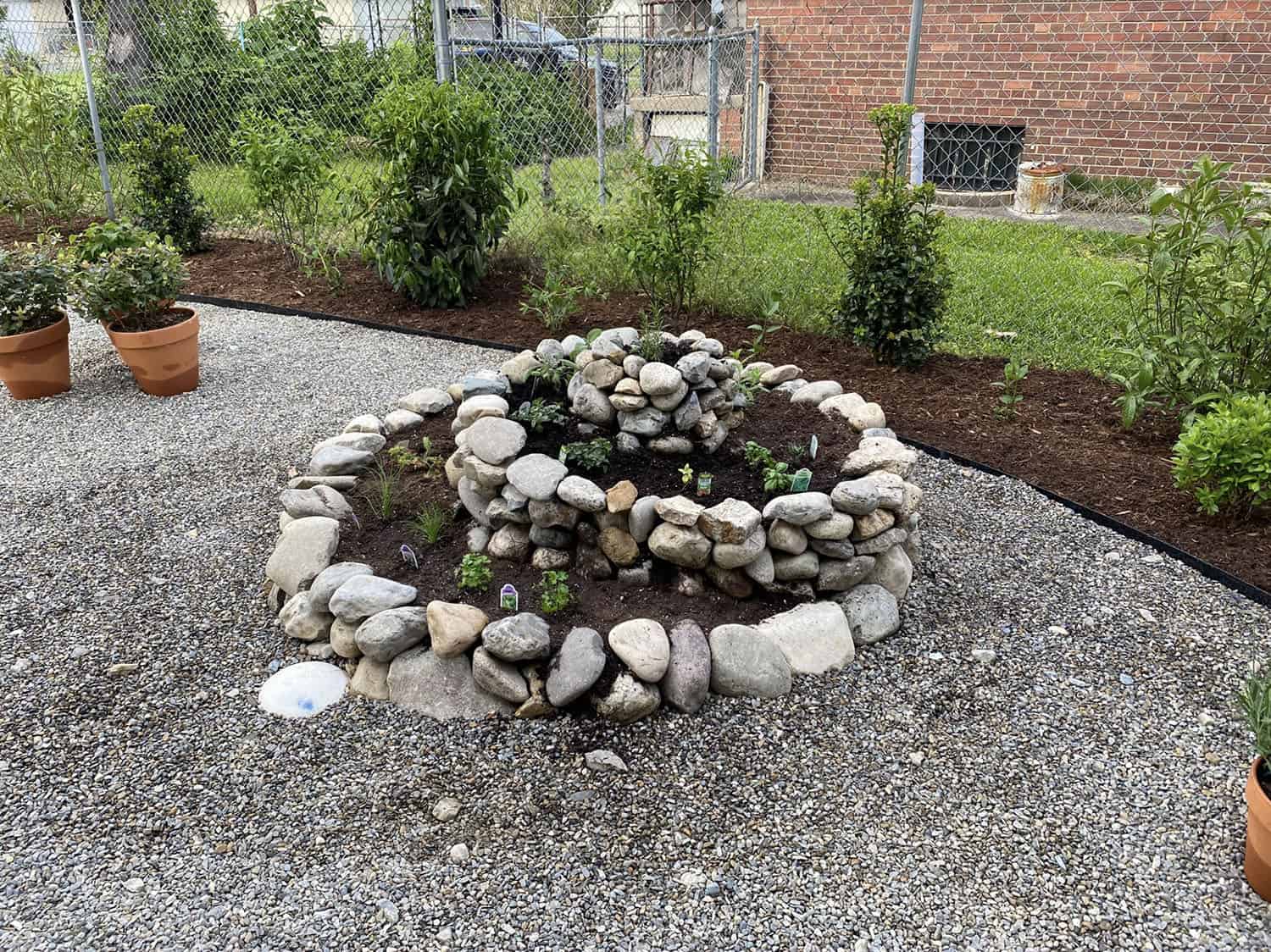
An herb spiral is a method for growing herbs that takes up less space and offers various planting conditions. It accommodates more plants than a straight line and features edible greens arranged in patterns. (via Clara Lambert Design)
4. Water Trough Planters.
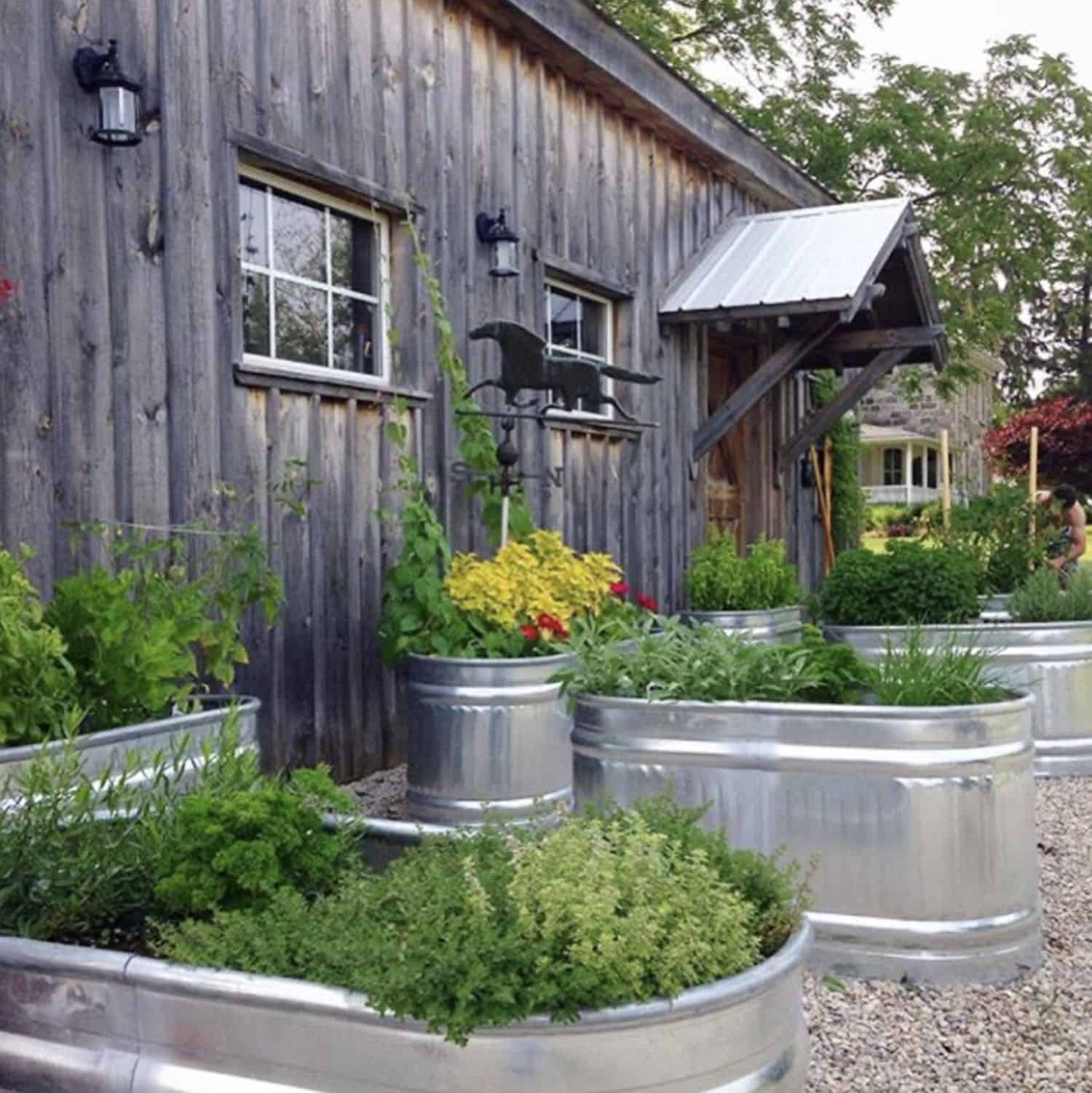
These raised beds can be placed anywhere on your property: your front yard, side yard, backyard, and even your porch. Here, cattle drinking troughs have been converted into raised planters. Before adding soil, be sure to drill a few holes in the bottom of your troughs for drainage. Also, add a layer of broken pots and rocks for drainage at the bottom. You can find these at animal feed stores, Amazon, and Home Depot, or you can try looking for salvaged “Water Trough” on Craigslist. (via @cynthia_weber_design / Instagram)
5. Drought Tolerant Garden.
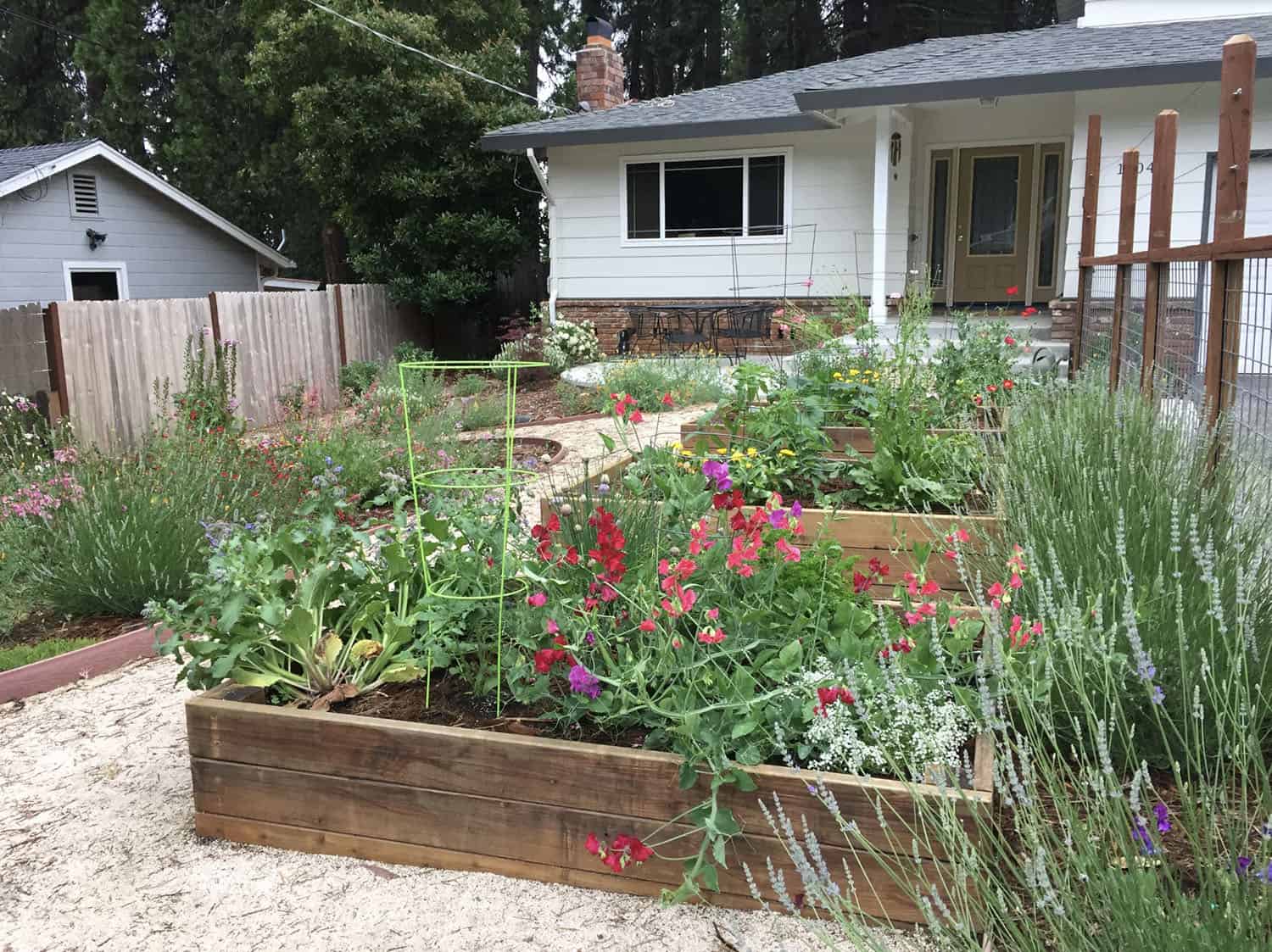
This garden view is a year after planting in a front yard of Sacramento, California. The native and drought-tolerant plants fill the area between the street and the set-back deer fence. The fence is transparent to keep a friendly face to neighbors. (via Brown Dion Design)
6. Double-Duty Raised Garden Bed.
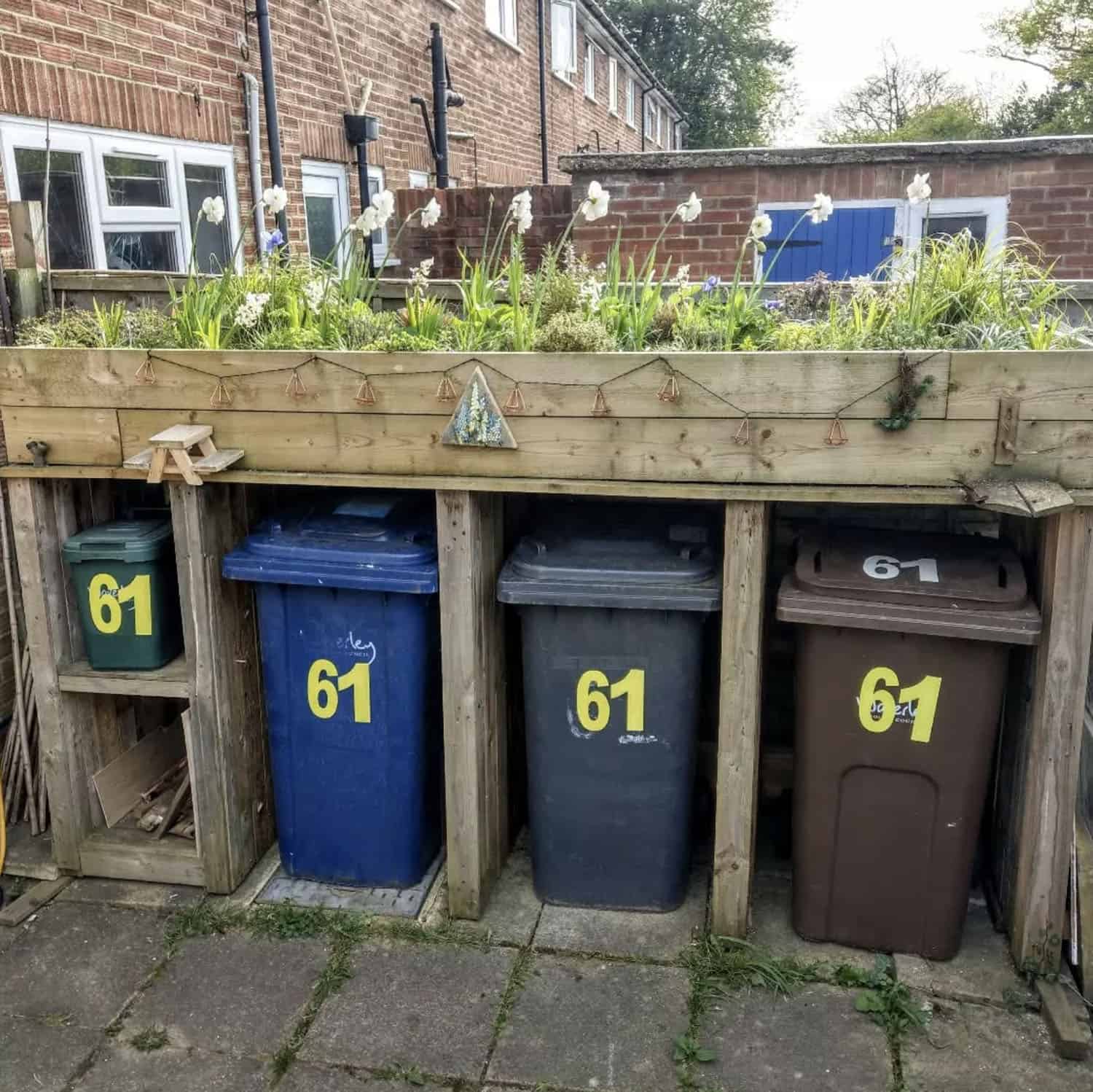
This homeowner has created a raised garden bed above a garbage bin storage area. A clever DIY that makes a typically unsightly design look most aesthetically appealing. The construction includes reclaimed materials. The plants include Daffodils, Hyacinths, and the Anemone Mr. Fokker (purple-blue, poppy-like flowers). String lights add a touch of ambiance in the evening. (via @ransomebuilds_diy / Instagram)
7. Untreated Cedar Raised Beds.
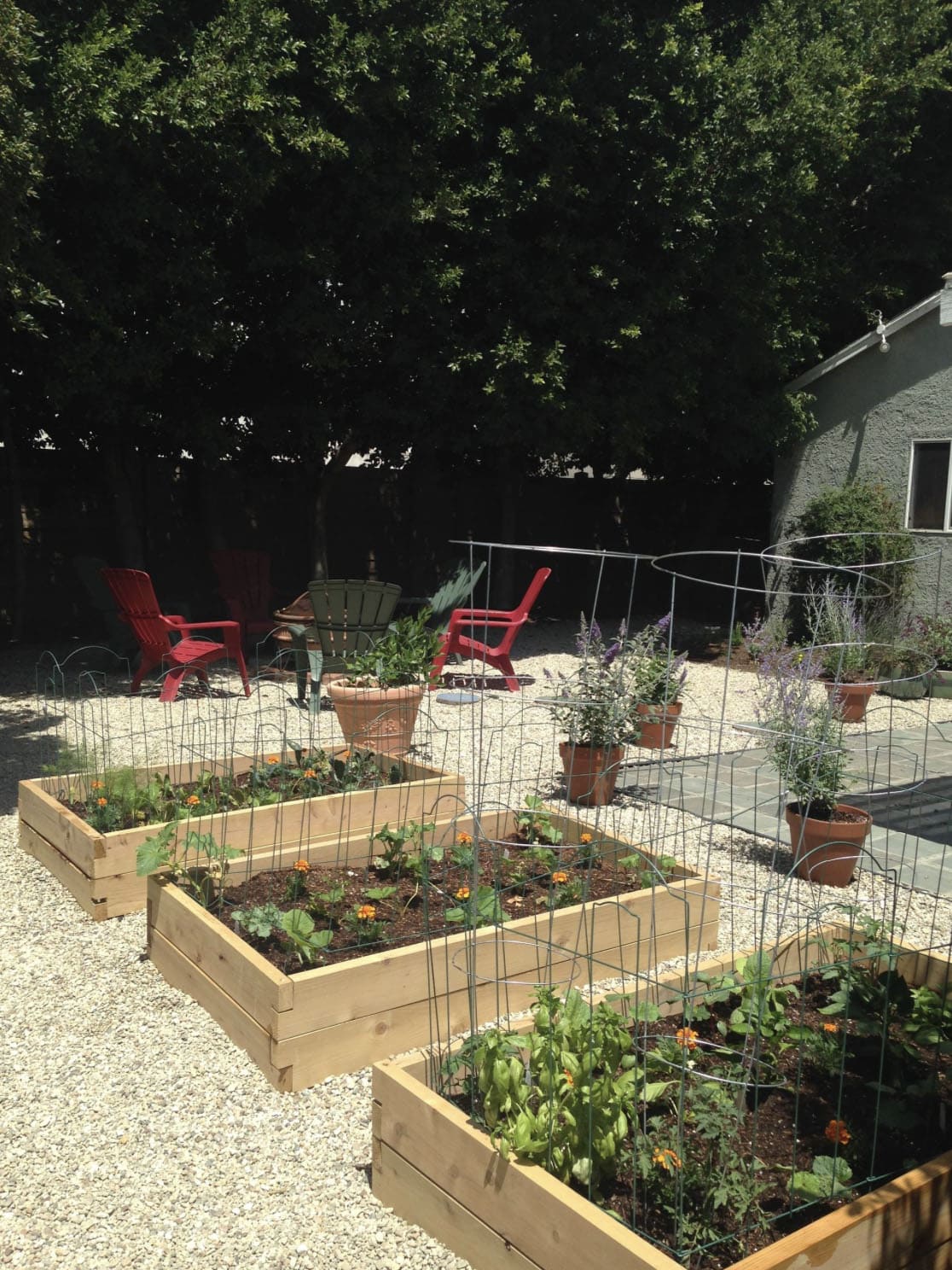
This vegetable garden includes three untreated cedar raised beds, surrounded by fencing and tomato cages to protect them from animals. Cedar is high in oil, so it is naturally rot and insect-resistant. It also doesn’t warp. It will weather to a silvery grey after about a season or two. You can also use redwood. Note: Pressure-treated lumber is not recommended for edibles. While the US no longer uses arsenic or chromium on pressure-treated lumber, it still uses other chemicals to treat the wood to be rot and insect-resistant, which may leach into the soil. (via Eden Condensed)
8. Raised Bed Trellis.
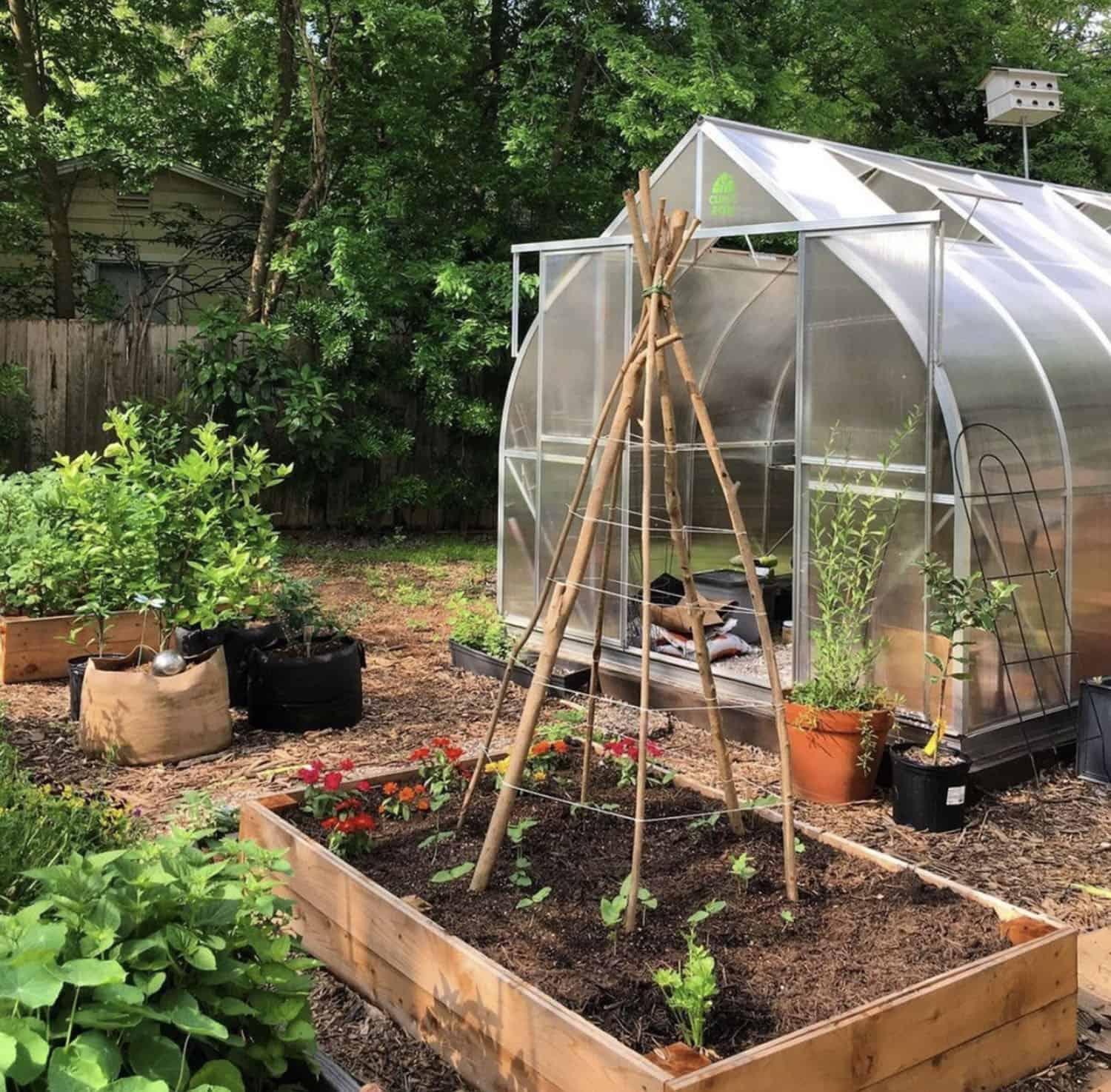
Vertical gardening enables you to have many plants and not take up additional space. It also does not require expensive trellises or supports. Forage your property or neighborhood for fallen branches that you can tie together to form a tepee. This provides ideal support for climbing or floppy plants, especially in their beginning stages of growing. (via @roogardening / Instagram)
9. Stock Tank Garden Beds.
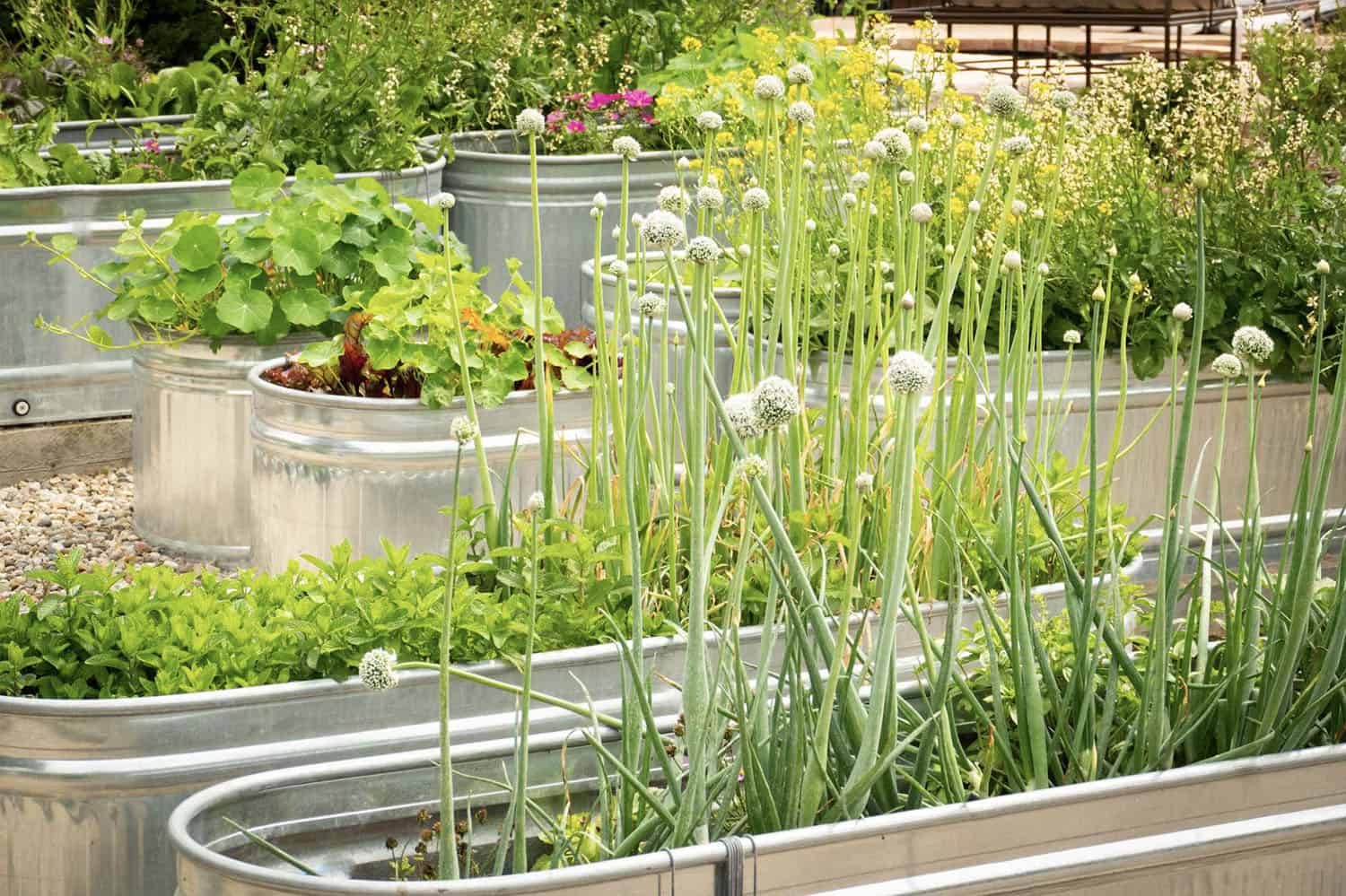
Galvanized stock tanks will add a beautiful touch to your garden and can be used to grow edibles such as vegetables and herbs. When preparing your tanks for the soil, be sure to drill several 1/2-inch holes in the bottom for proper drainage. Add a layer of pea gravel in the bottom to prevent the drainage holes from getting clogged. Alternatively, you can use landscape fabric or pieces of broken pottery. Add a layer of small branches, yard clippings, dead leaves, and other debris till you reach about 18 inches from the top. Finish with a mix of garden soil and compost for a nutrient-rich soil that is ideal for growing. @rootheartgarden has an excellent DIY video on filling metal raised beds and saving hundreds of dollars on potting soil! (via Sweet Smiling Landscapes)
10. L-Shaped Corner Beds.
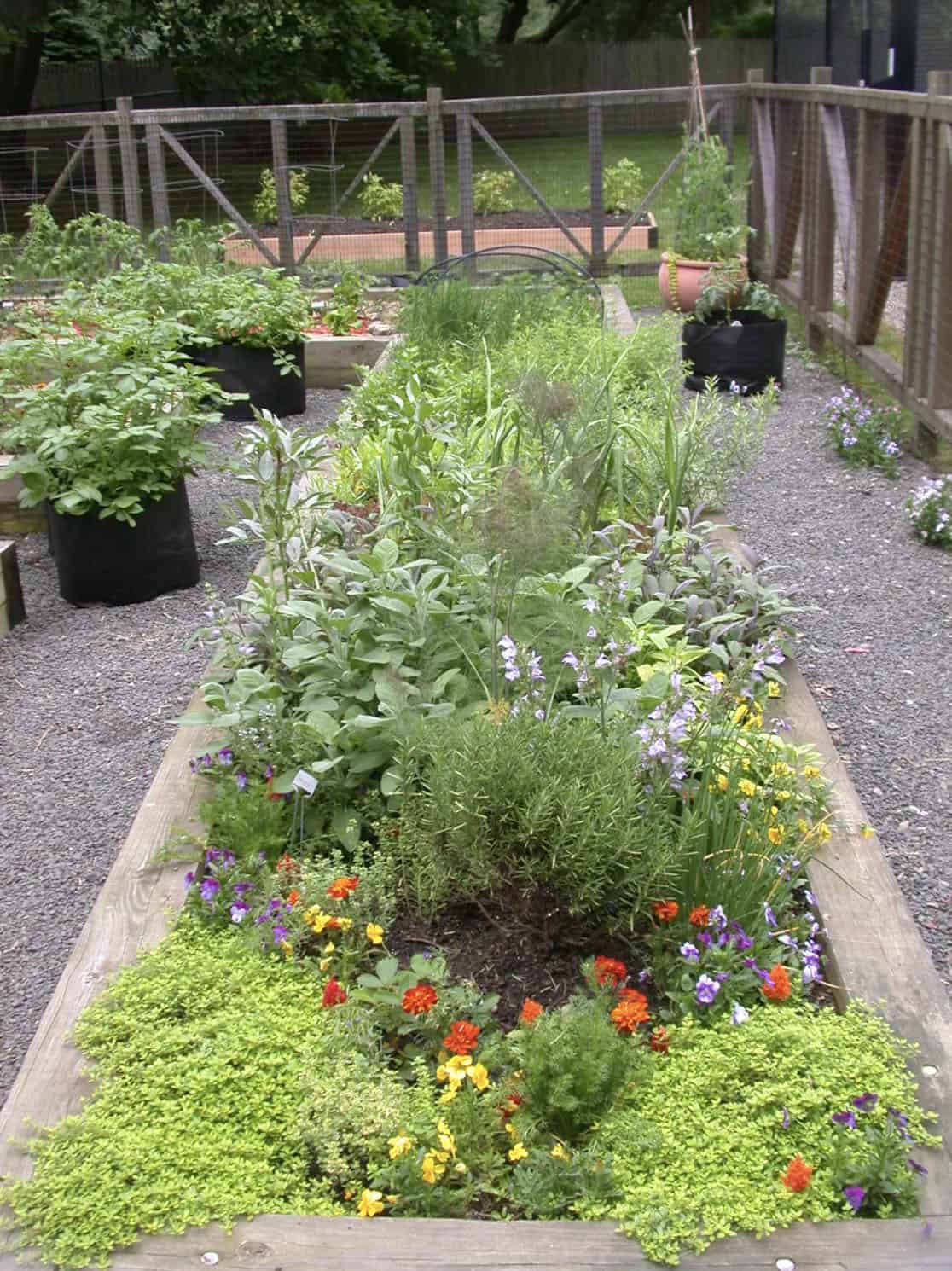
An L-shape hugs corners, maximizing tight garden spots while adding visual structure. The raised beds contain heirloom vegetables, while the gravel walkways have potato bags and self-seeded violas. (via Bespoke Gardening)
11. Herbal Spirals Flagstone.
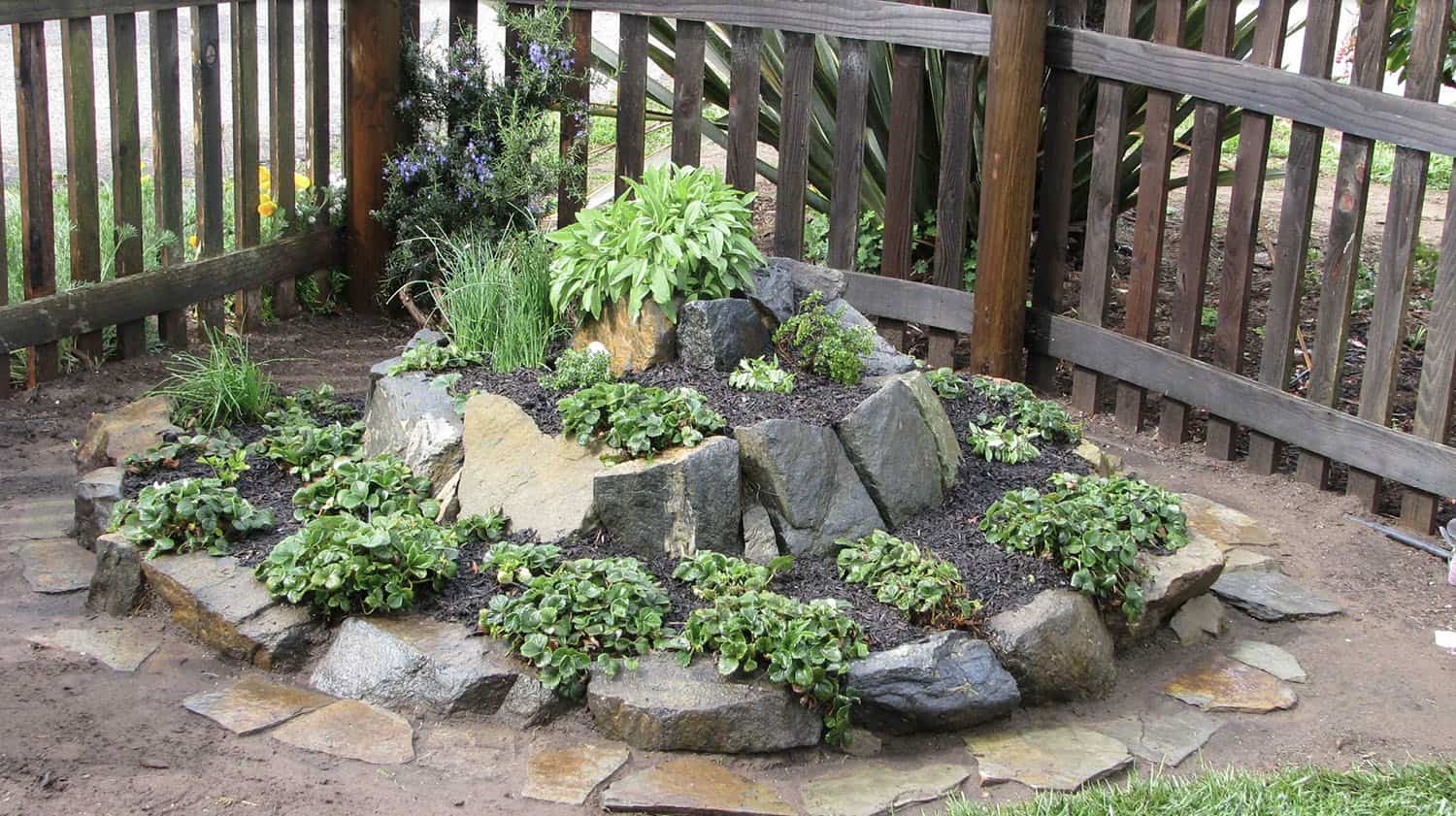
This easy DIY raised vegetable garden uses stacked stone and soil to create a beautiful focal point in the corner of a fenced-in yard. This is the perfect idea to make the most out of a small garden area. (via CP Landscapes)
12. Grow Your Garden Vertically.

Using bamboo in your vertical garden is a great option, as it can support all types of crops, such as cucumbers and zucchini. Bamboo is also inexpensive, lightweight, and durable, not to mention decomposable. These bamboo teepees grow a sweet potato crop. The ground cover is shell sand. The entire garden area is lined with a professional-grade fabric weed barrier to prevent any type of washaway movement of the shell sand. It also helps to keep it from sinking into the native dirt. (via @kristen.growing / Instagram)
13. DIY Tiered Drawer Raised Bed.
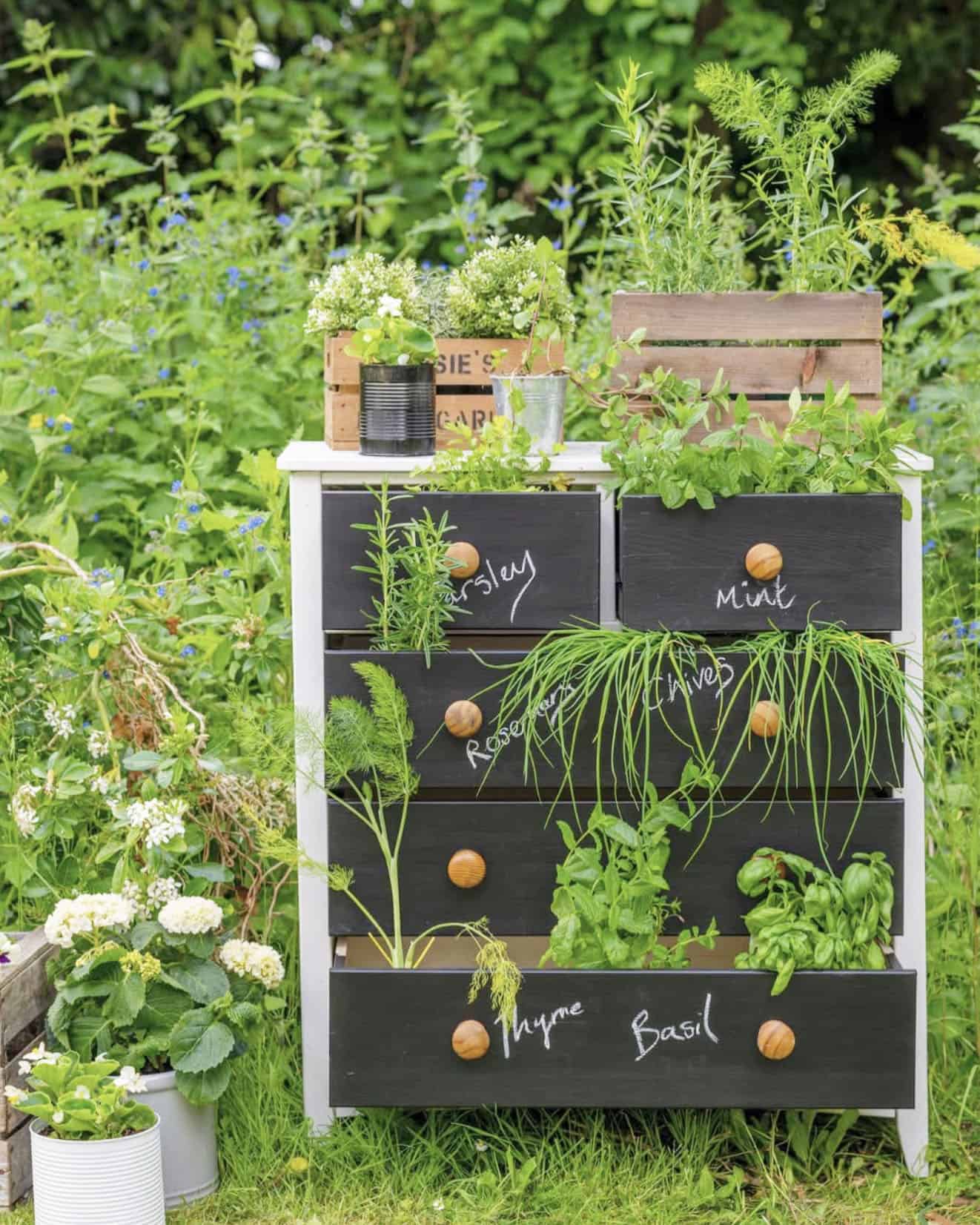
Get creative and upcycle, bringing some individuality to your garden spaces. Take an old piece of furniture, such as a dresser, and fill the drawers with soil and plant some herbs. To protect it from the rain, paint it in protective shed paint. Use chalk to label each of your herbs. This would be perfect outside of your kitchen! You can copy this same look using other types of furniture, such as an old tub, table, or crib. (via @lynnelambourne / Instagram)
14. Herb Raised Garden Bed.
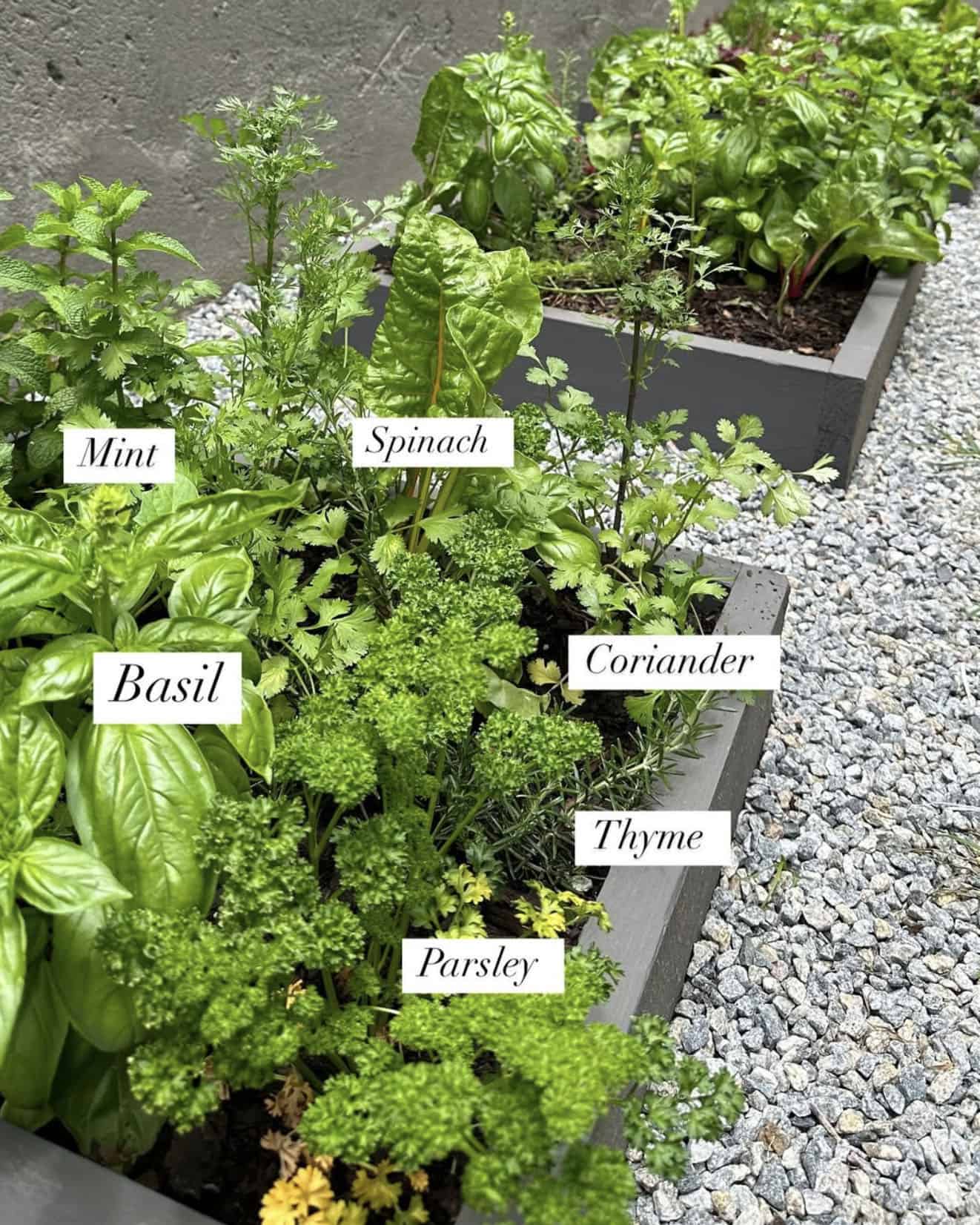
Planting a mixed vegetable garden bed is aesthetically pleasing and offers wonderful benefits. Mixing plants can help reduce pests and diseases, as certain varieties support each other in keeping unwanted bugs at bay. Marigolds are also a great addition, as they add beautiful color while helping to deter pests, attract beneficial insects ( pollinators such as bees and butterflies), and enhance the overall health of your vegetable garden. (via @farm_minist_ / Instagram)
15. Concrete Raised Planters.
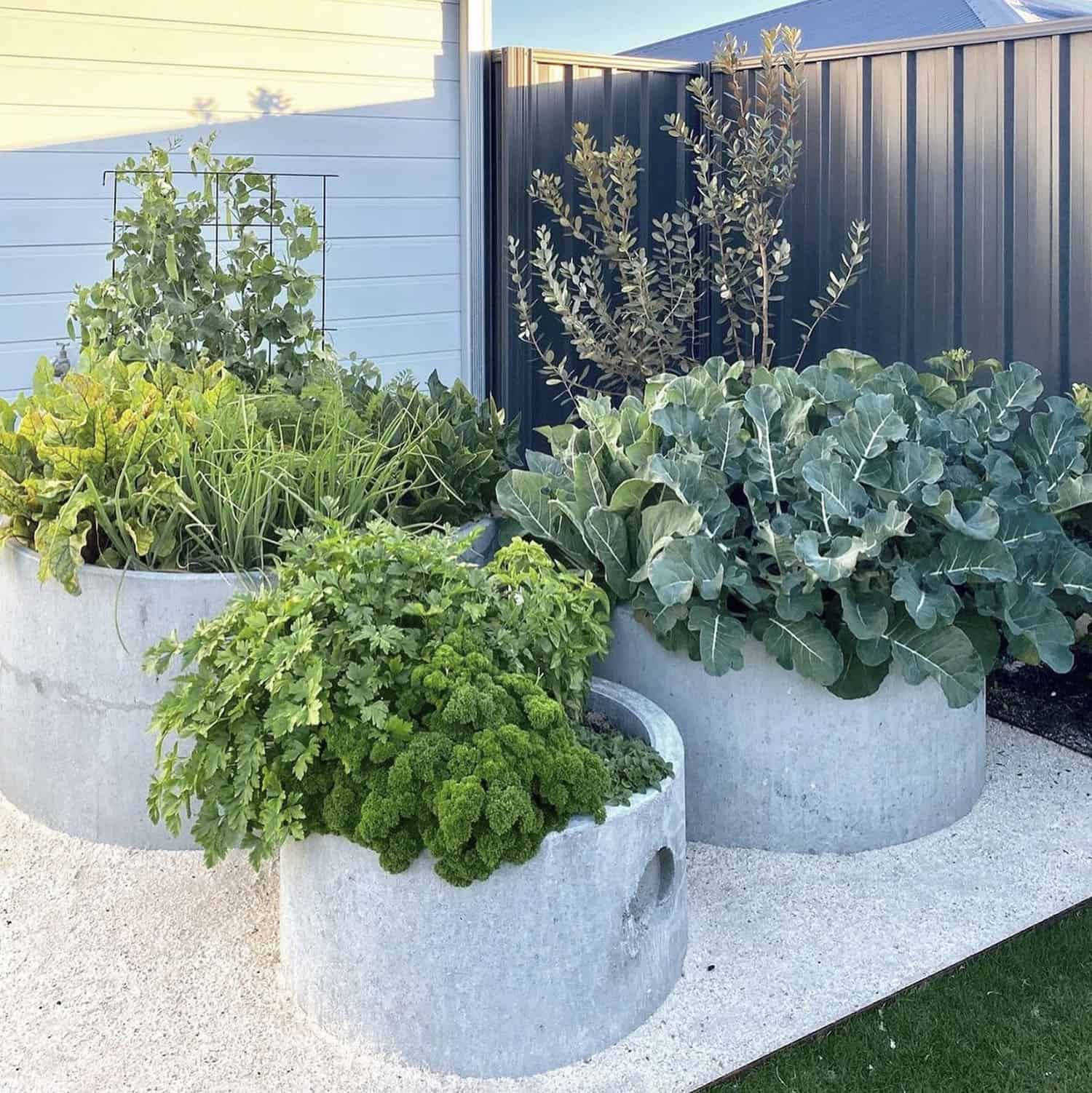
For this herb and veggie garden, solid concrete Silt Pits (similar to soak wells) were used to create the raised planters. These were sourced from Galvins in WA, which manufactures concrete products for commercial/trade. These silt pits offer durability and add a unique aesthetic to your garden. These structures, often used for drainage, can be creatively adapted for gardening purposes. They do not need to be sealed on the inside before planting. TIP: Growing your own fruits and vegetables requires a lot of energy to produce the fruit, but be sure to select good, nutritious soil from your local garden supply center. (via @educatedexteriors)
16. Grow Bag Raised Beds.
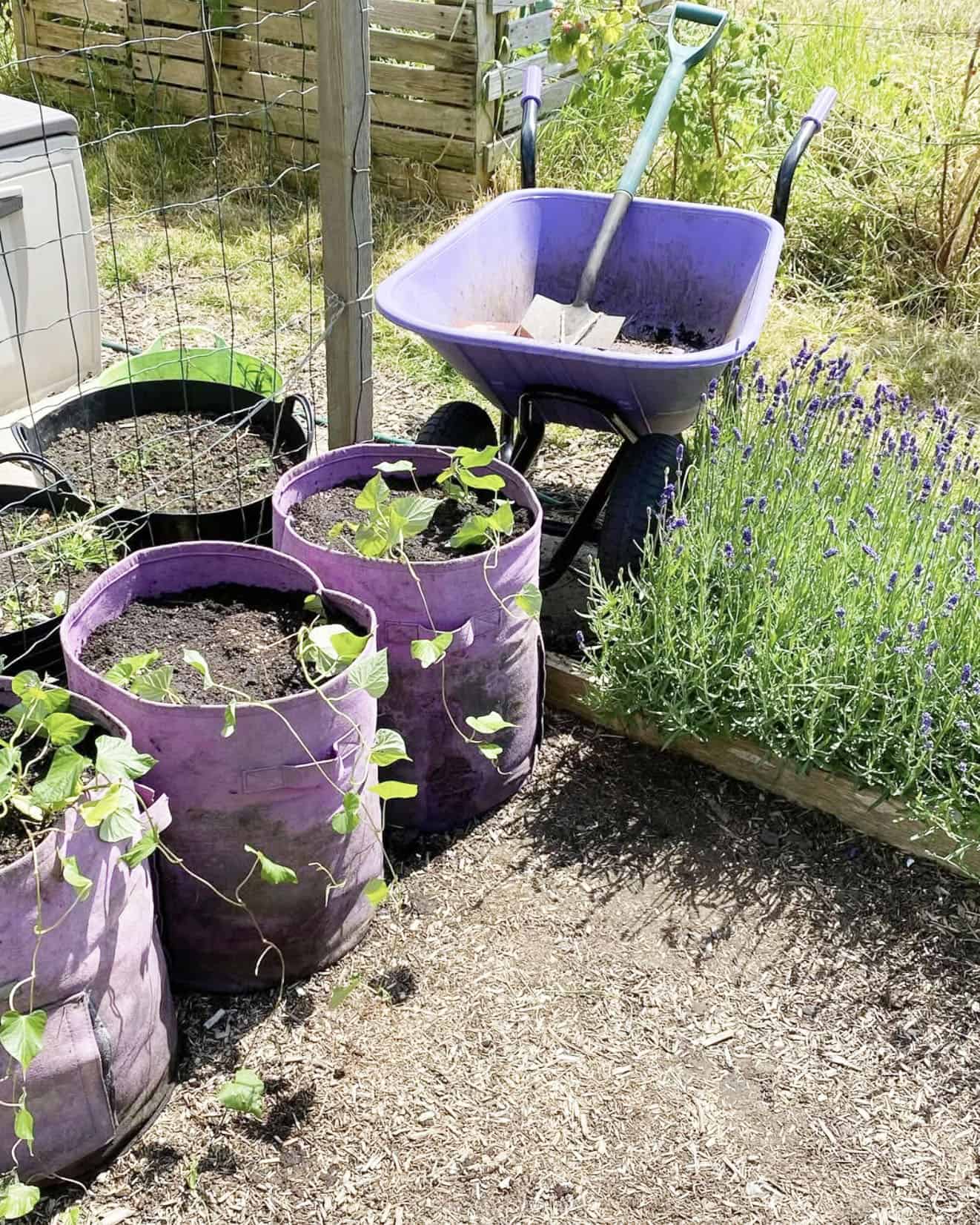
A purple theme seems to be growing in this garden! You find purple sweet potatoes planted in purple grow bags next to purple lavender and a purple wheelbarrow. Grow bags are perfect if you don’t have an in-ground garden. They are also ideal for use on the porch or balcony. They are lightweight and portable, as they have handles for moving. They have strong root systems due to air pruning. Improved soil aeration and drainage due to permeability. They are cost-effective and can be grown anywhere. You don’t have to worry about overwatering, as the excess water will drain out of the fabric. (via @foodgardening4all)
17. Upcycled Tire Garden.
Give old tires a new life by transforming them into raised bed containers. This grouping of colorful tires was painted to bring some charm and a visual focal point to the front yard. Tires are perfect for growing flowers but should not be used for edible plants to avoid toxins from leaching into the soil. (via @evelyngrace.619)
18. Window Box Raised Beds.
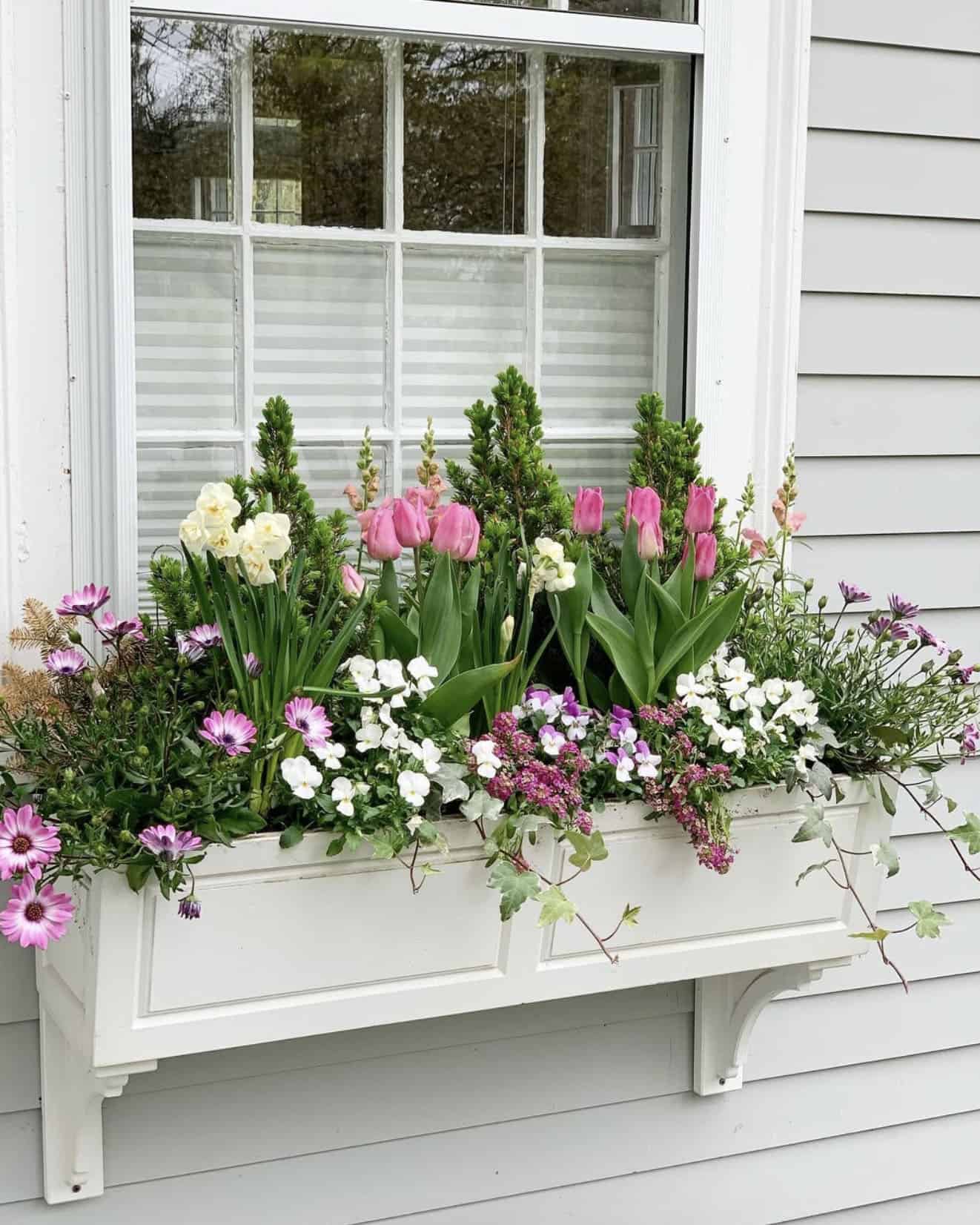
There are plenty of ways to create raised beds on your property. You can affix a wooden planter box as a small raised bed on a fence or in front of your window. Fill it with seasonal blooms. This one features some spring inspiration, with little evergreens giving some height early in the season. When spring bulbs and other plants, such as snapdragons, come up, they will still add fullness. Violas and osteospermum and some mid-height. Layer in some helper plants to spill over, including ivy and alyssum, which are cool-weather favorites. TIP: During the winter holidays, you can decorate these planter boxes with seasonal greens and decorations. (via @thistlecontainers / Instagram)
19. Recycled Brick Planter Box.
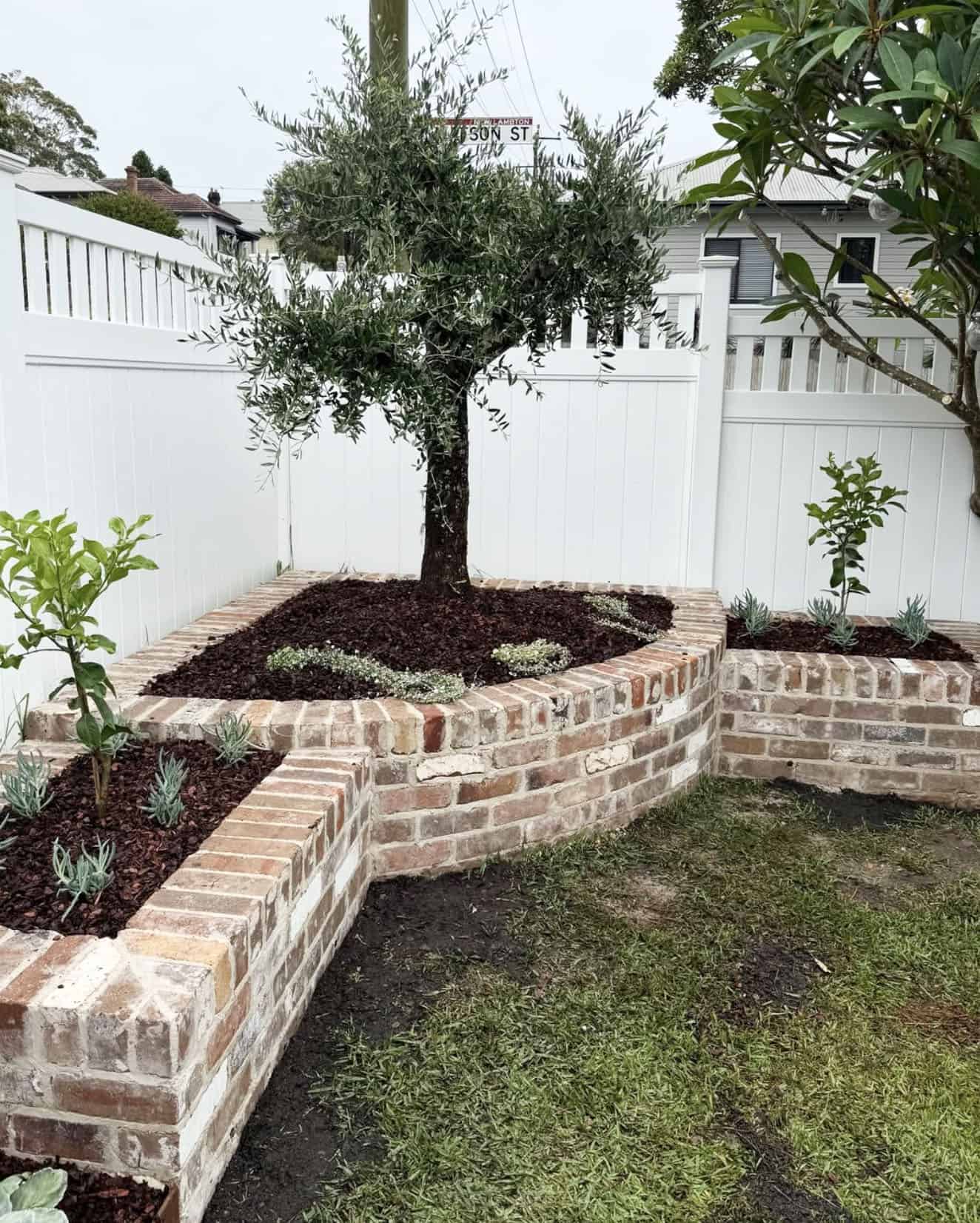
Using red bricks to create a raised bed on your property will help to enhance the overall aesthetics. When designing your bed, place it in either the sun or shade, based on the plants you are trying to grow. Select bricks that will endure wet conditions for when you are watering. Typically, brick-raised beds are constructed using mortar to keep the walls in place. FYI: The large tree was brought into the yard using a crane! (via @karldrinkwaterlandscaping / Instagram)
20. Tree Stump Planter.
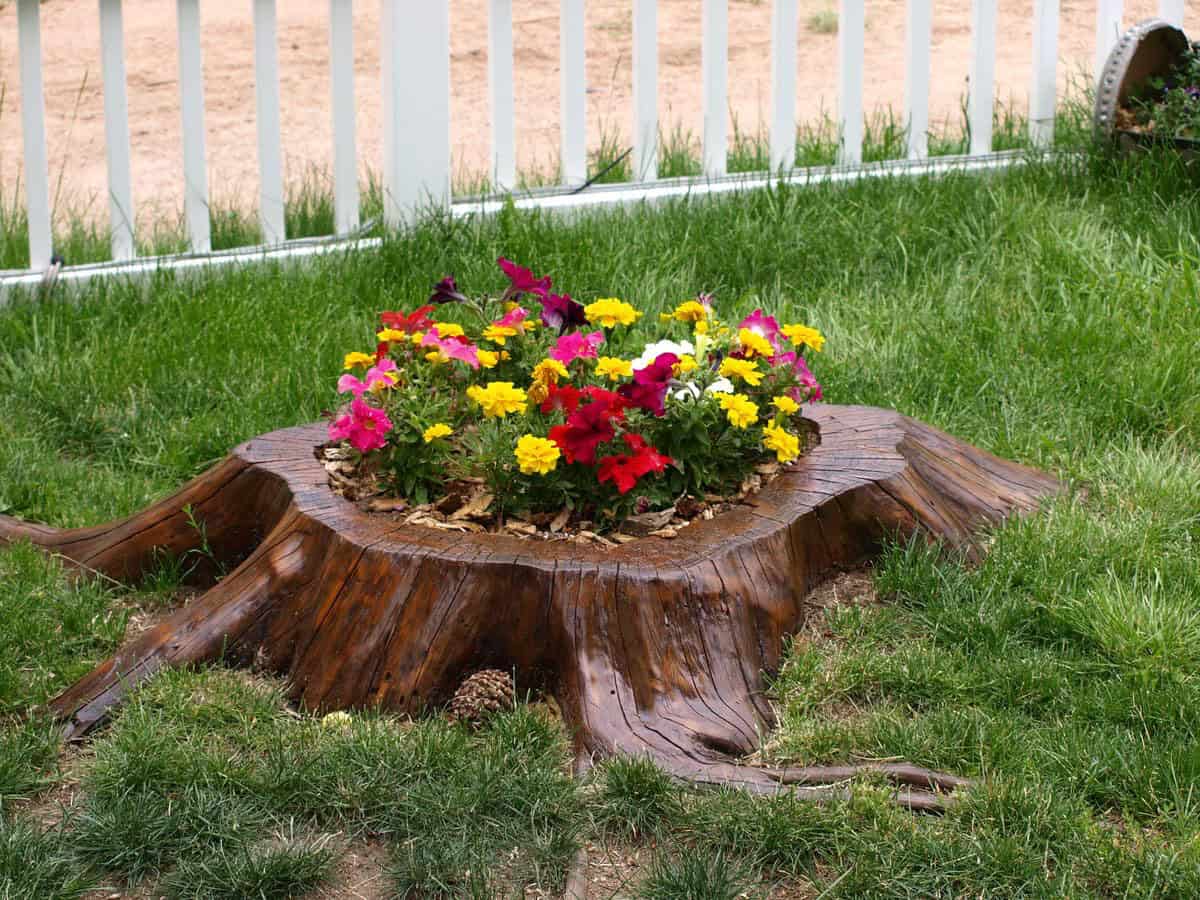
This ‘tree stump planter’ adds beauty and character to the yard. Most people will cut a tree down and remove the roots when it dies. Sometimes, the tree stump is left to decompose naturally over the course of time. This can take three to five years, with roots taking up to ten years to completely decay. This depends on the species and your garden conditions. Instead, you can hollow out the center and transform it into a raised planter. A layer of shellac or penetrating sealer should be applied to prevent the stump from decaying. Then, you can add some gravel, compost-enriched soil, and plant flowers to give it a new life. (via Tracy Carroll / Pinterest)
21. DIY Raised Garden Beds.
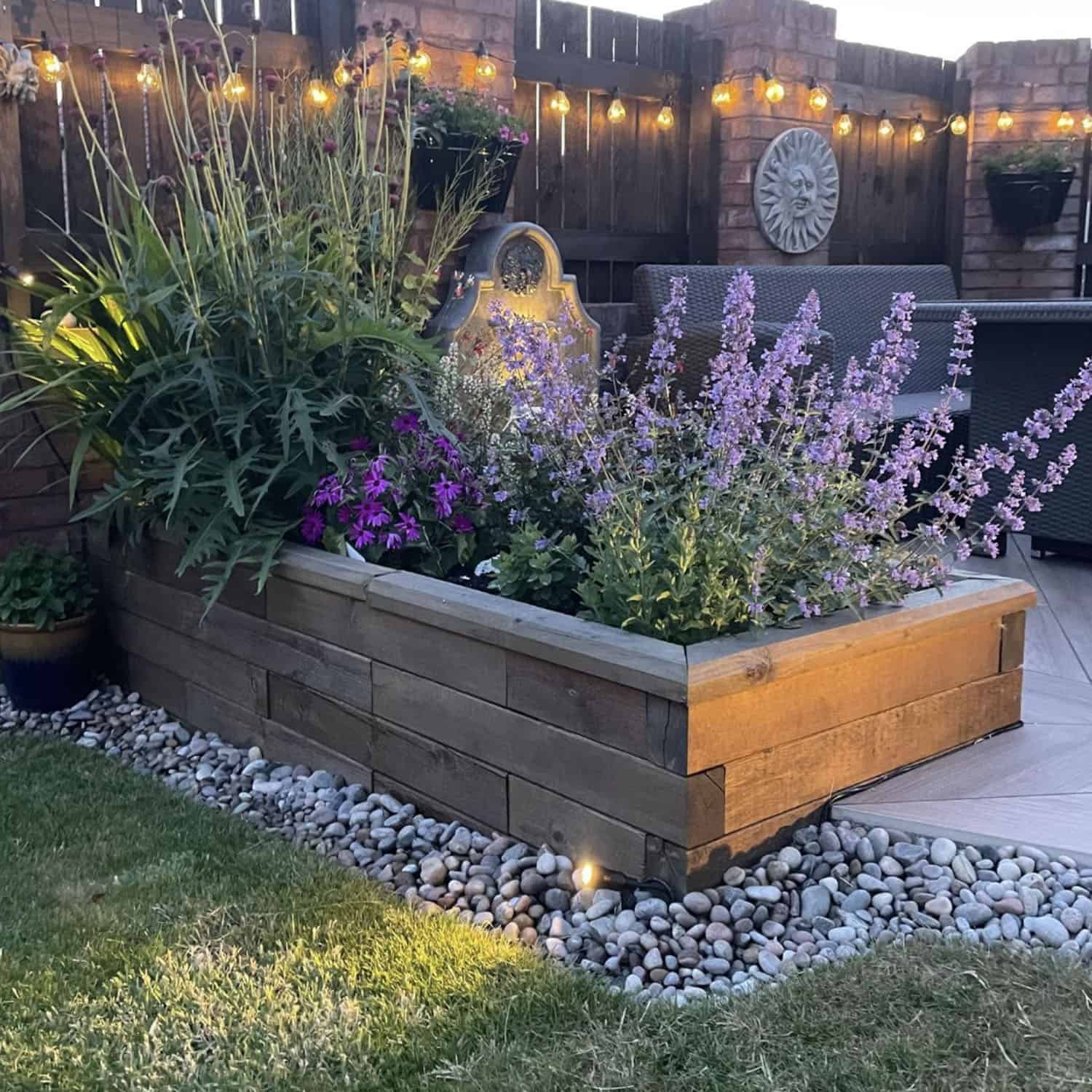
A small update in your backyard can make a big difference, whether it is creating a new place to grow veggies, planting some flowers, or adding some new garden seating. A raised garden bed can fit almost any space. With some creativity, you can add an attractive planter to your yard. Be sure to add some landscape lighting and string lights for ambiance. (via @woodblocx / Instagram)
22. Raised Companion Garden.

Companion gardening is growing two (or more) crops near one another, which could help with nutrient uptake, improved pest management and reduced pesticide use, enhanced pollination, and higher yields. This one has organic cherry tomato plants, organic basil, and flowering marigolds all planted together in a stainless steel bed. Plant the basil and marigolds at the base of the tomatoes. The marigold roots will help to repel root-knot nematodes (a common tomato pest), while the tomatoes can offer some shade, which will help the basil to thrive. Growing the basil near the tomatoes could improve the flavor of both plants. (via The Hub / Pinterest)
23. The Pallet Herb Garden.
Repurpose old pallets into a living wall filled with herbs or plants. This pallet garden can be vertical or lay flat on the ground for a raised bed with partitions where the plants can grow between the slats. You can also use garden labels to mark your herbs or plants. Pallets can typically be sourced from businesses for free, so check Craigslist or Facebook Marketplace. TIP: Make sure the surface of the wood pallets is in suitable condition for painting and free from grease, wax, or penetrating substances. If they have been previously painted, remove loose or flaking paint. Any existing algae, mold, rust, or similar must be treated and removed. If there are remnants of previous penetrating preservatives or oil treatments, they will also need to be removed. (via @frenchicpaint / Instagram)
24. Corrugated Metal Raised Bed.
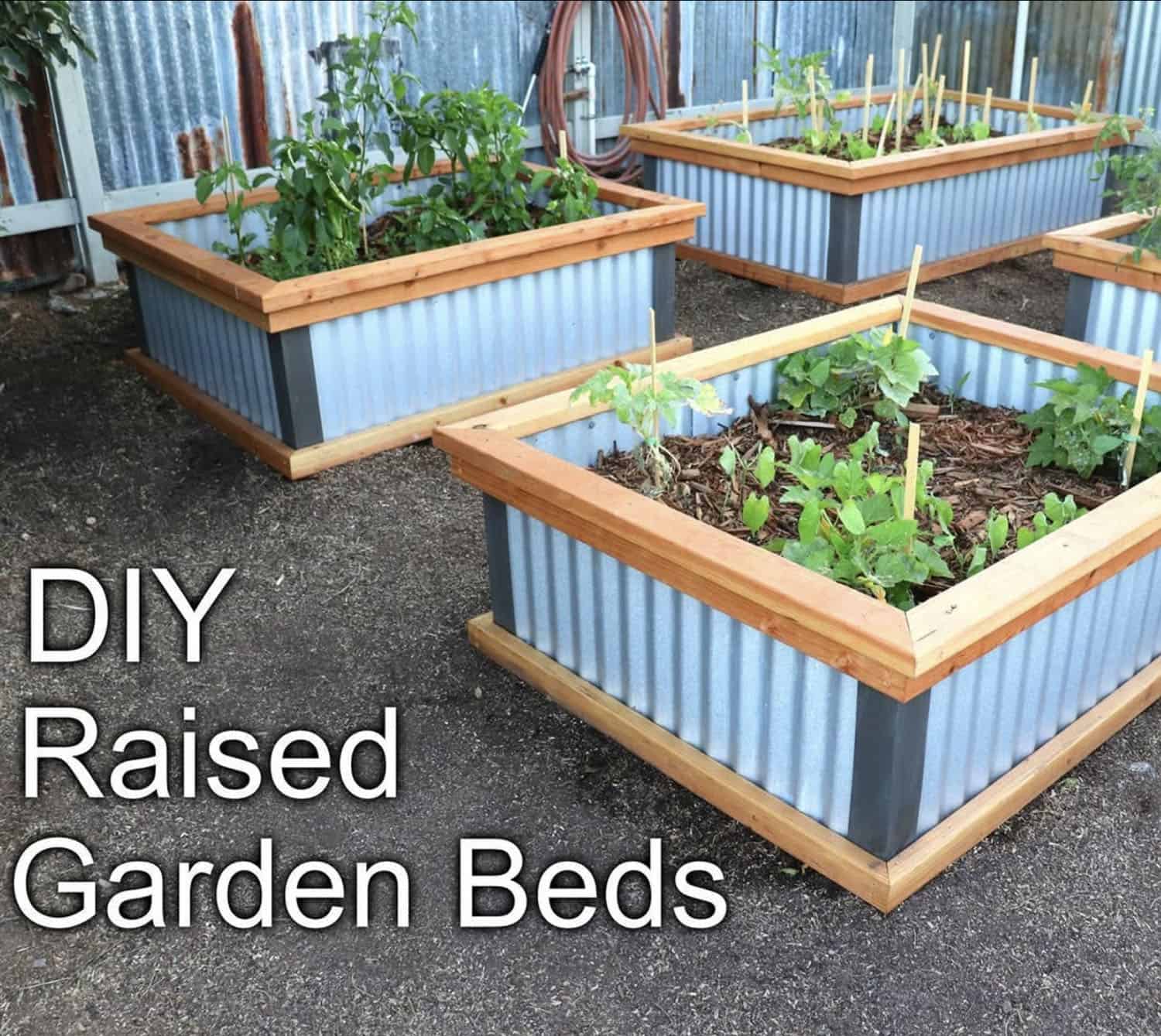
Corrugated metal beds are not only beautiful but also durable and easier to build than you think. They are also safe to use in edible gardens. The reflective metal does not absorb additional heat from the sun, so it helps to keep the soil’s temperature cooler than other materials used for raised container beds. Get the DIY tutorial at the provided link. (via @homesteadonomics / Instagram)
25. Straw Bale Raised Garden Bed.
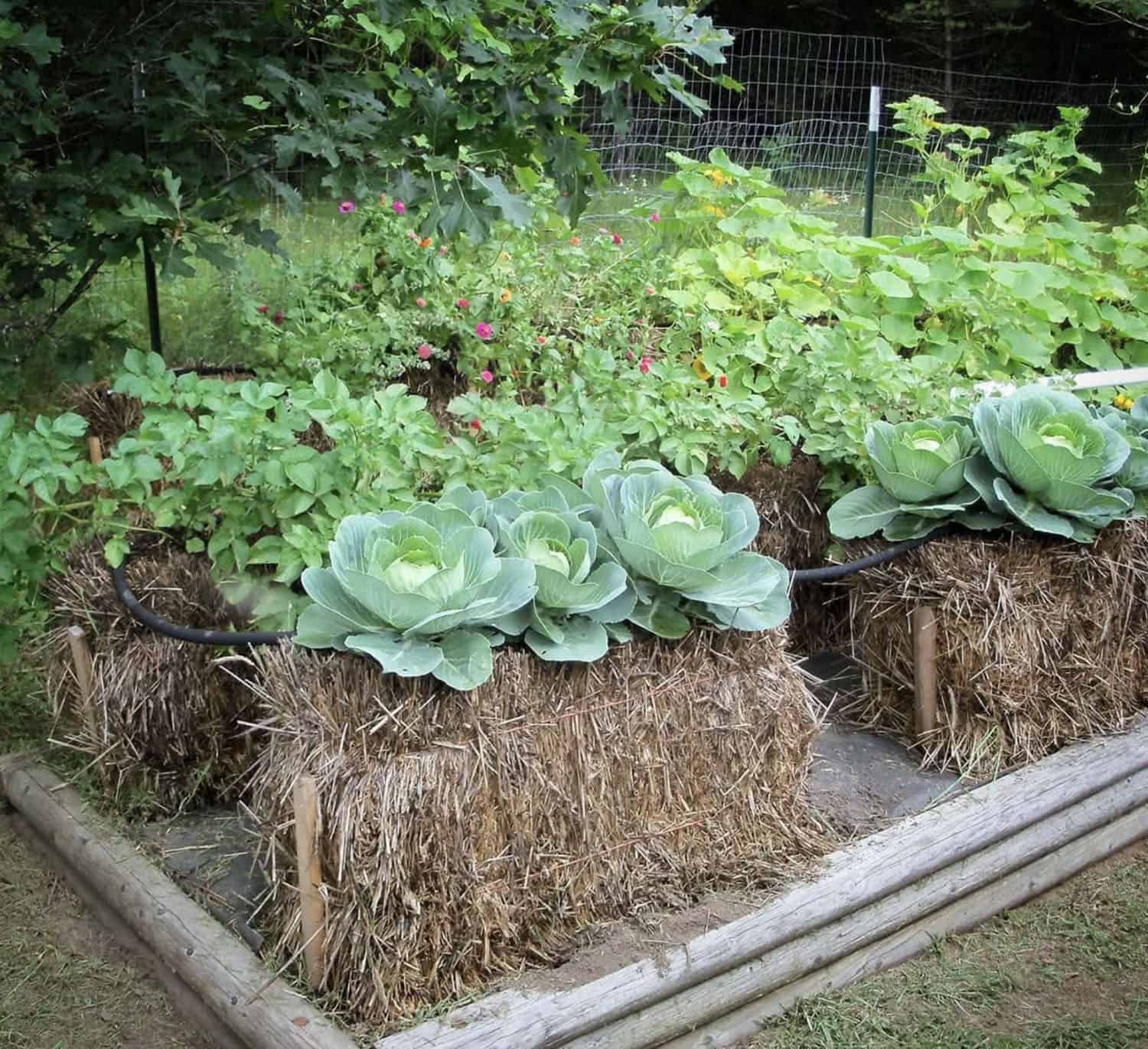
Use straw bale gardening to add productive garden space and raise your planting bed. With straw bales, you can create a garden in areas with poor or no soil. They act as a natural container for your plants and can be grown anywhere. You do not have to till or cultivate your soil; they are perfect for growing flowers and edibles. They are well-suited for small spaces, even on a balcony or rooftop patio. To create a raised straw bale bed, you will need organic potting soil, compost, and a trowel for planting. (via @growsomegood / Instagram)
26. Raised Bed Vegetable Garden.
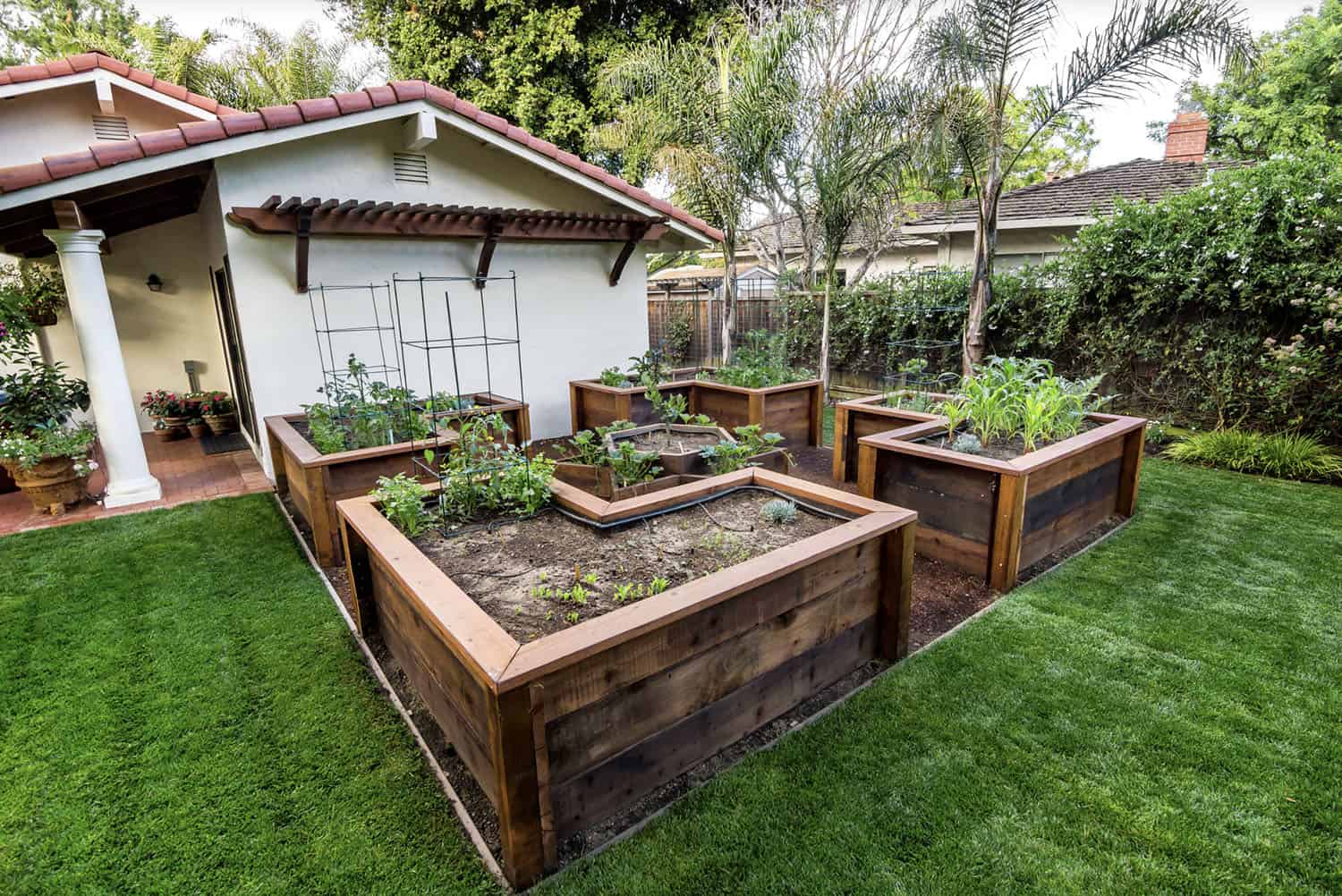
This raised vegetable bed is accessible from every angle and easy on the back—everything grows right in front of you, so no bending over is required. It is made of redwood and is 30″ tall. The beds are made of 2x material and 4×4 posts at each corner. You may want to put posts into the ground to secure them. You can use any material that is resistant to rot.
They are lined with a sticky membrane, a self-adhering, rubberized material commonly used to wrap houses as a base layer for roofing and sealing around windows and doors. If you line the interior of your planting boxes with it, you create a barrier that water can’t penetrate, thereby eliminating wood rot and extending the life of your box. They are filled completely with soil. The paths between the planters are a thick layer of bark mulch. The area is 19′ X 19′. (via Casa Smith Designs)
27. Salvaged Antique Bathtub.
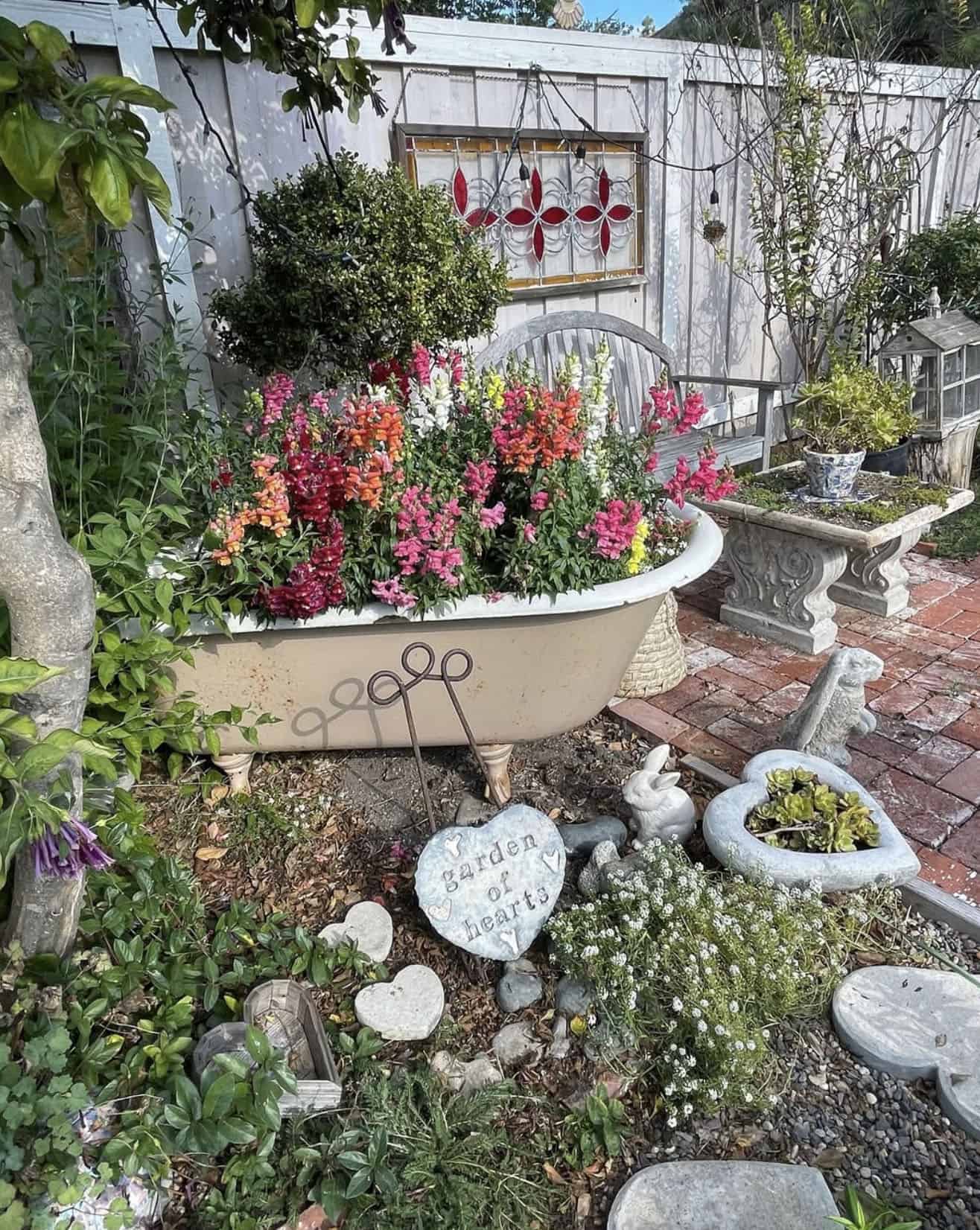
Repurpose an antique bathtub to use as a raised garden bed. This one is planted with snapdragons. The DIY “Garden of Hearts” stepping stone is made out of cement. The stained glass window hanging from the wooden fence was custom-designed for this outdoor garden oasis. (via @rootedinthyme)
28. Cinder Block Planters.
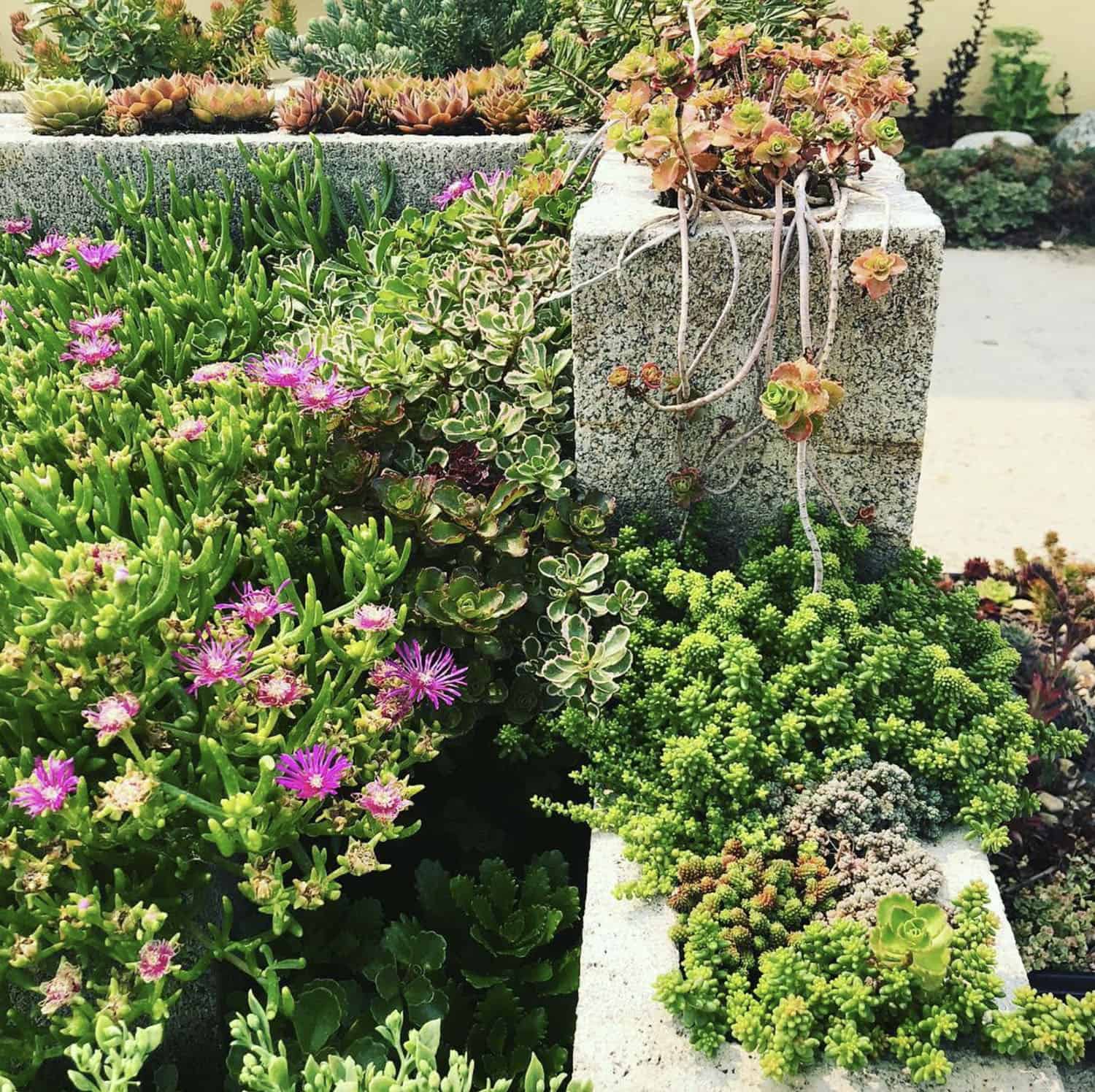
Repurposing concrete or cinder blocks into a raised bed can add a unique look to your garden. However, if you are using concrete blocks, you need to be mindful that they may leach lime into the soil over time, altering its acidity. Succulents are the perfect option, as they thrive in slightly acidic to neutral soil with a pH range of 6.0 to 7.02. Some succulents, such as sedums and sempervivums, actually prefer alkaline soil. (via @mountaincrestgardens / Instagram)
29. DIY Hoop House Raised Bed.
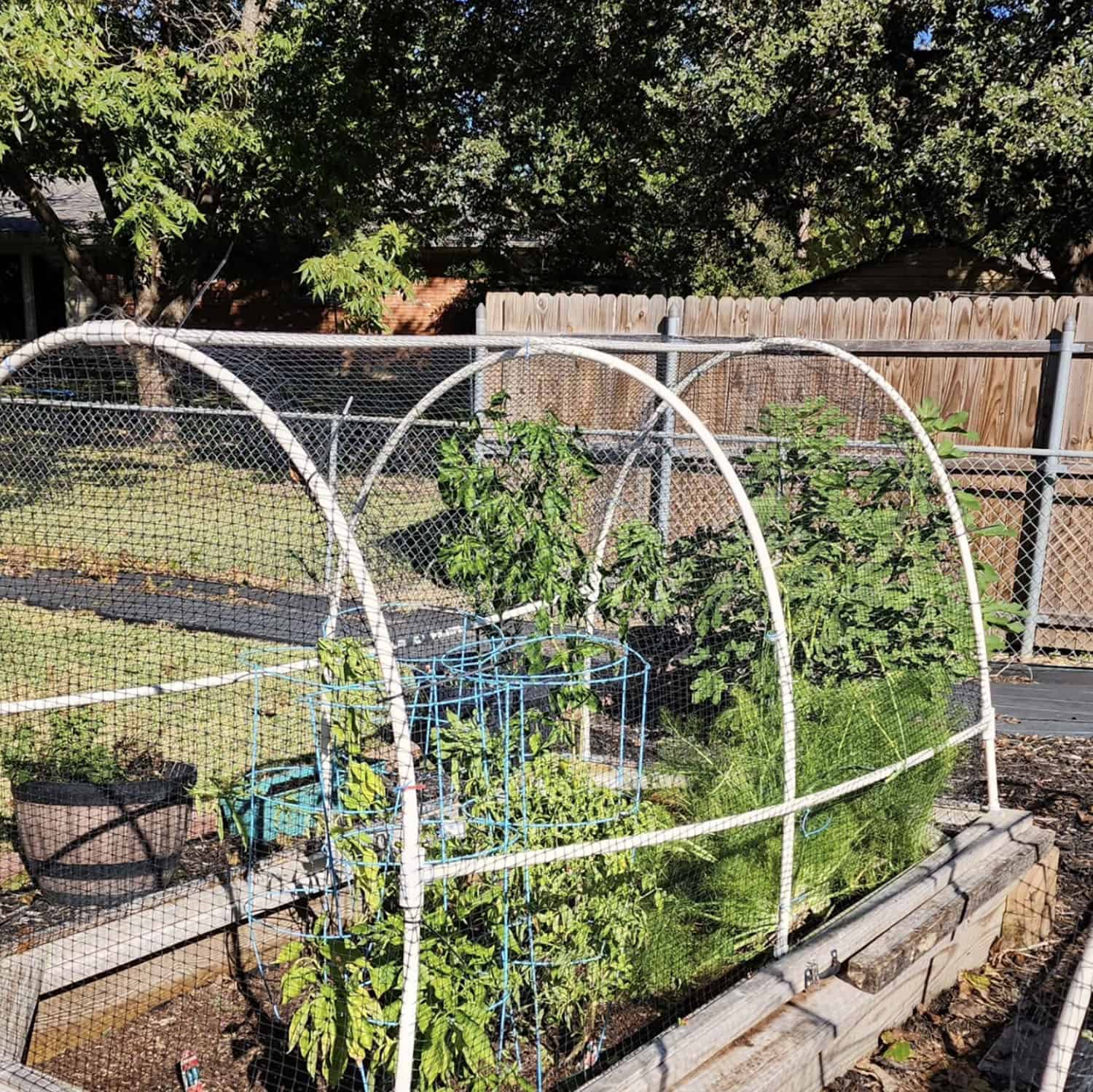
This hoop house acts like a type of greenhouse, built using tubes and lightweight netting. It can help extend your garden’s growing season and protect your vegetables from animals. When inclement weather comes in, you can protect your hoop house with heavy-duty, UV-resistant greenhouse plastic or a shade cloth. It can be secured with clips (such as pool towel clips). You can also buy a Hoop House Kit if you do not want to DIY. This hoop house grows eggplants, various peppers, and fennel. Hoop houses protect plants from rain, wind, and cold temperatures through passive solar heat gain, enabling an extended growing season. (via @gs916 / Instagram)
30. Tall Raised Beds.
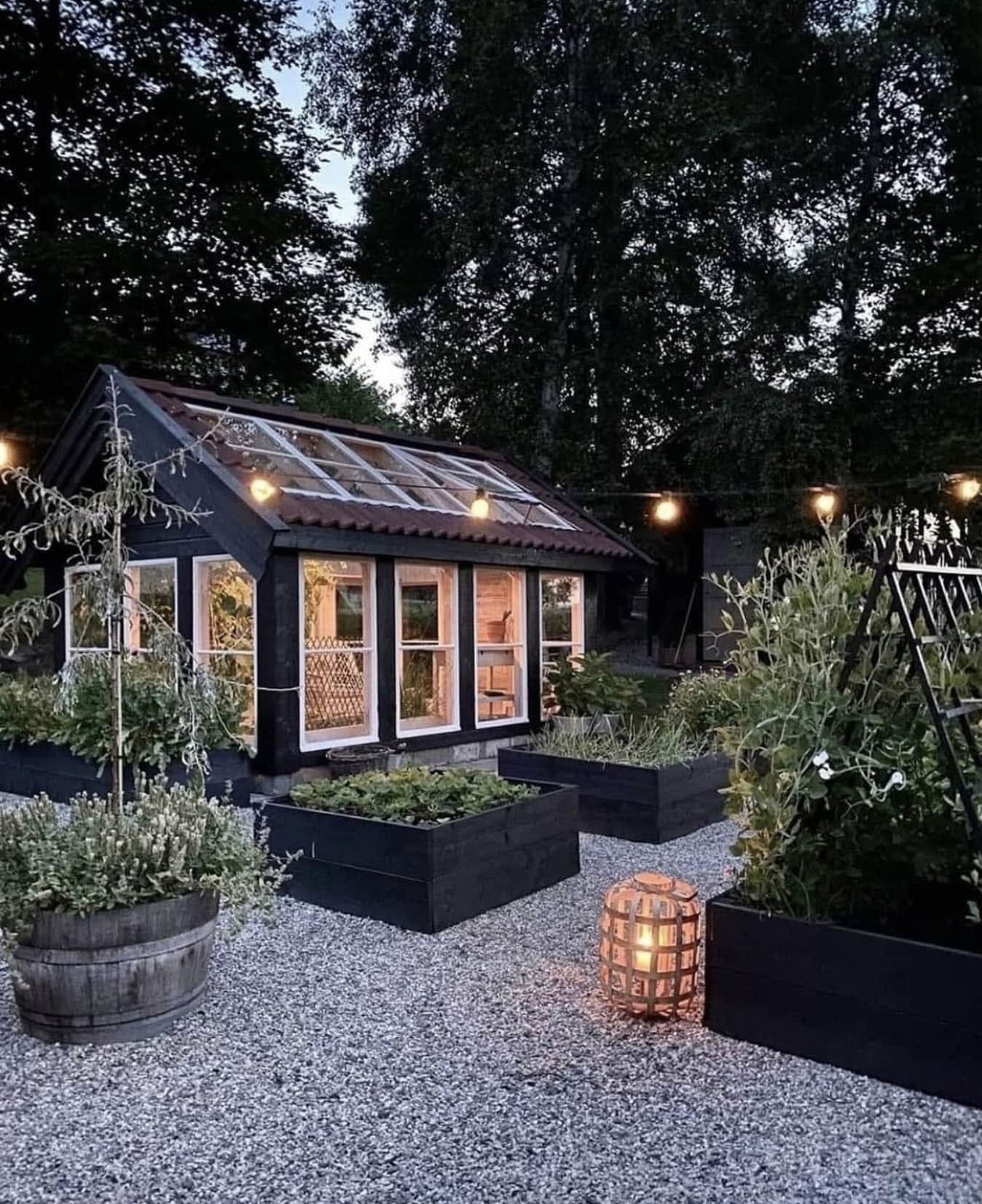
Tall raised beds can make your small yard feel more spacious by utilizing vertical space. Taller beds will also ease maintenance, as you won’t have to bend over as you would with in-ground beds. (via @husihagen / Instagram)
31. “Nursery” Raised Bed.
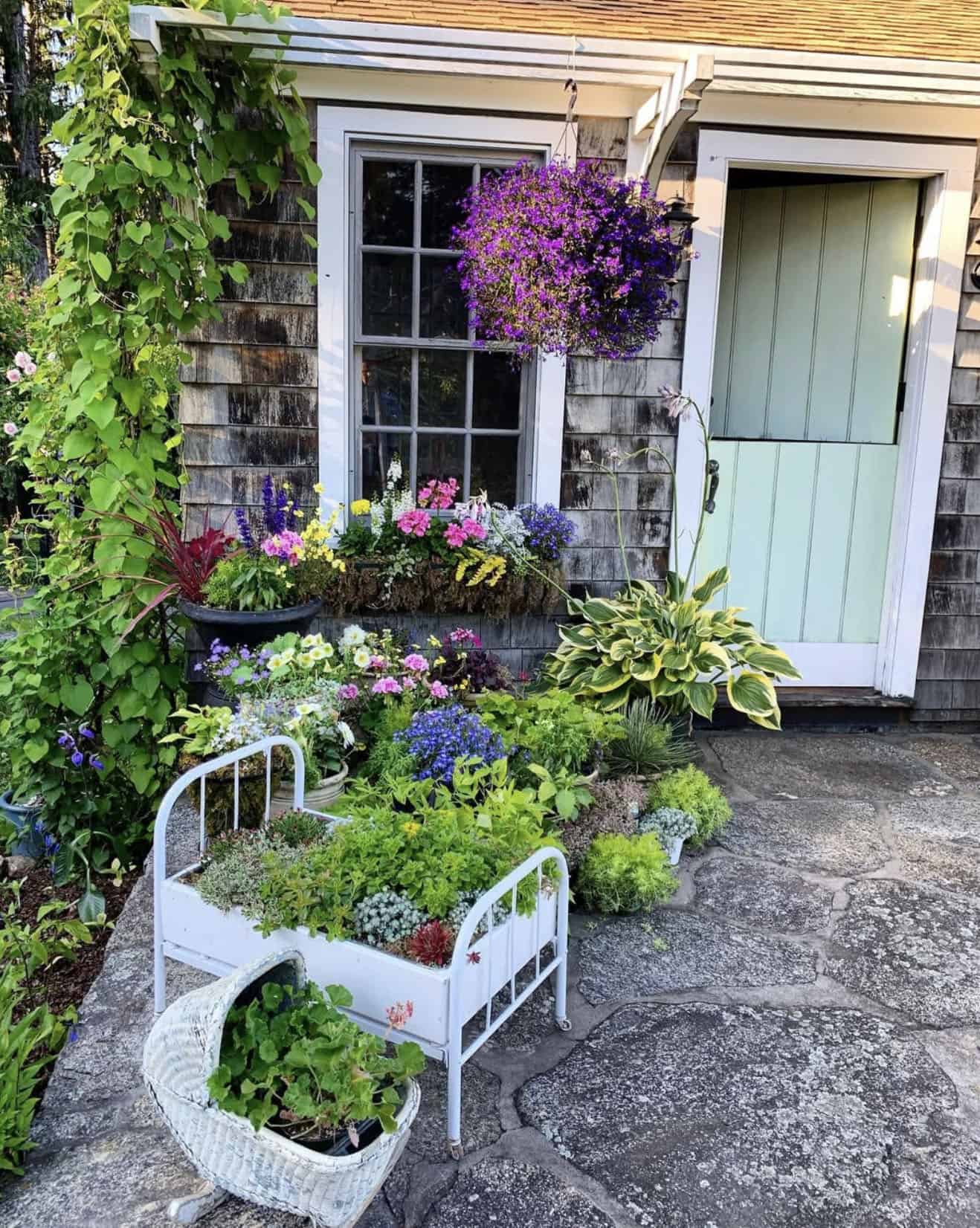
Upcycle a vintage nursery bed, fill it with soil, and add flowers, herbs, or succulents. The wicker rocker helps to complete the nursery theme. The baby bed plants on this patio were designed to resemble a patchwork quilt with alternating colors and textures. (via @pixieperennials / Instagram)
32. Raised Bed Vegetable Garden.
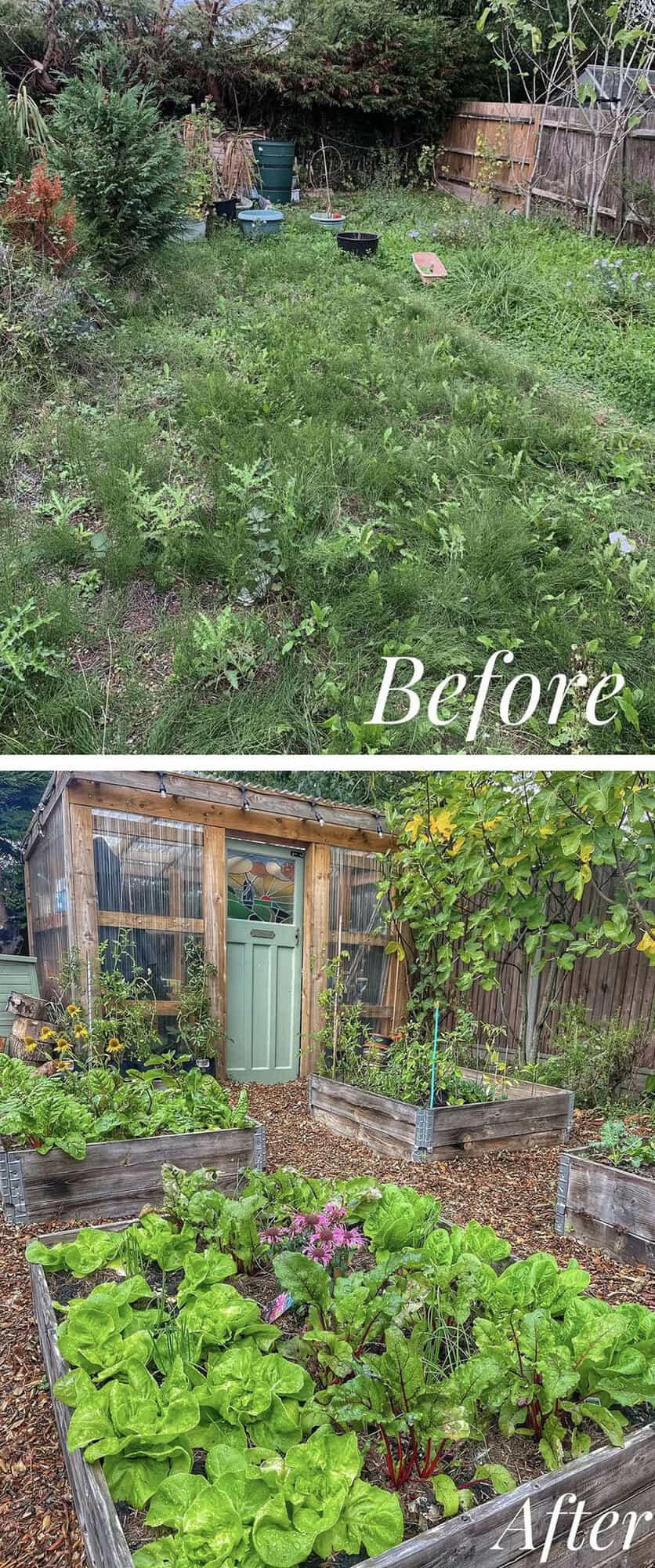
A once unloved garden was transformed into a functional and productive vegetable garden, featuring a bespoke greenhouse for an extended growing season and a space to relax and raise seedlings. Simple raised beds were added to produce salad, herbs, and vegetables. (via @jacks_patch / Instagram)

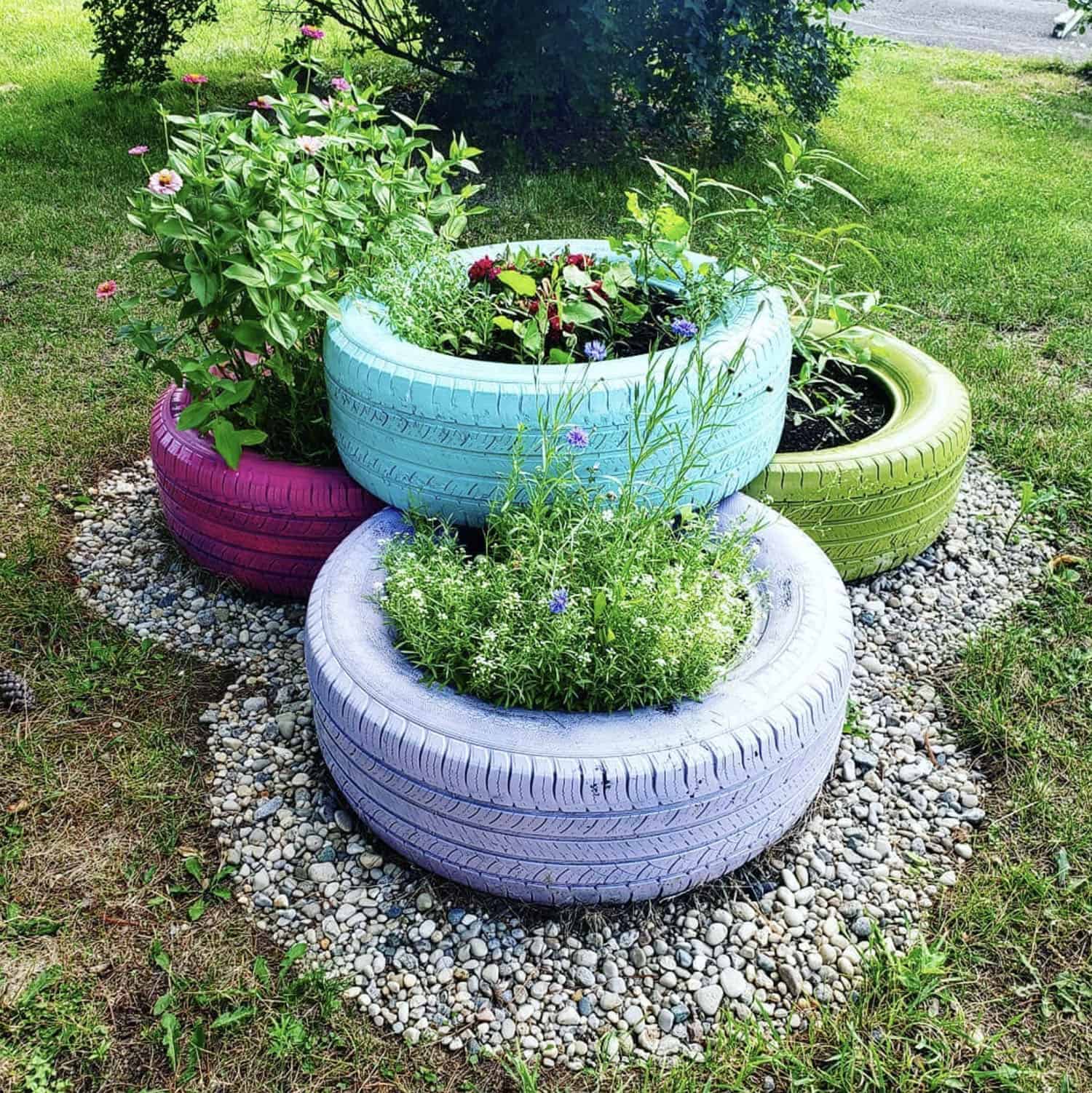
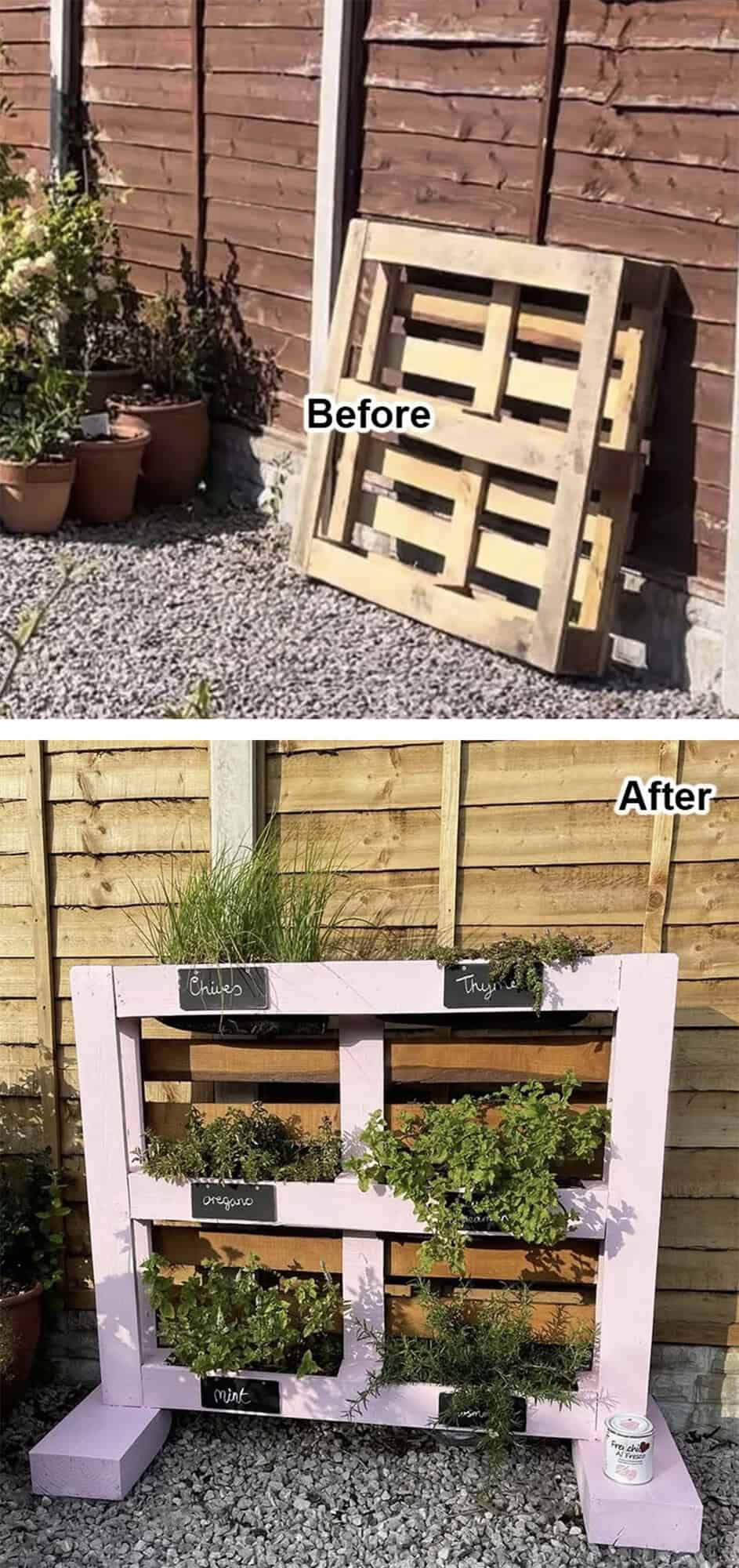




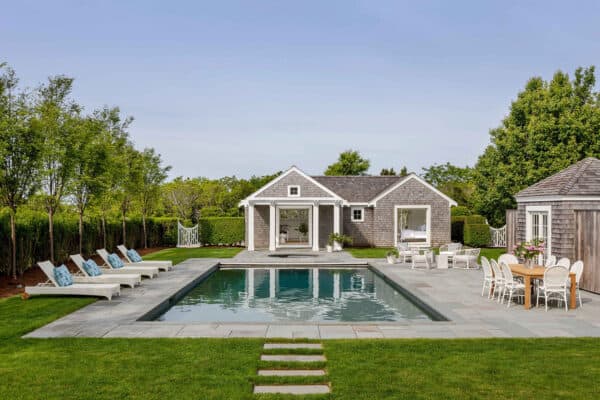

1 comment